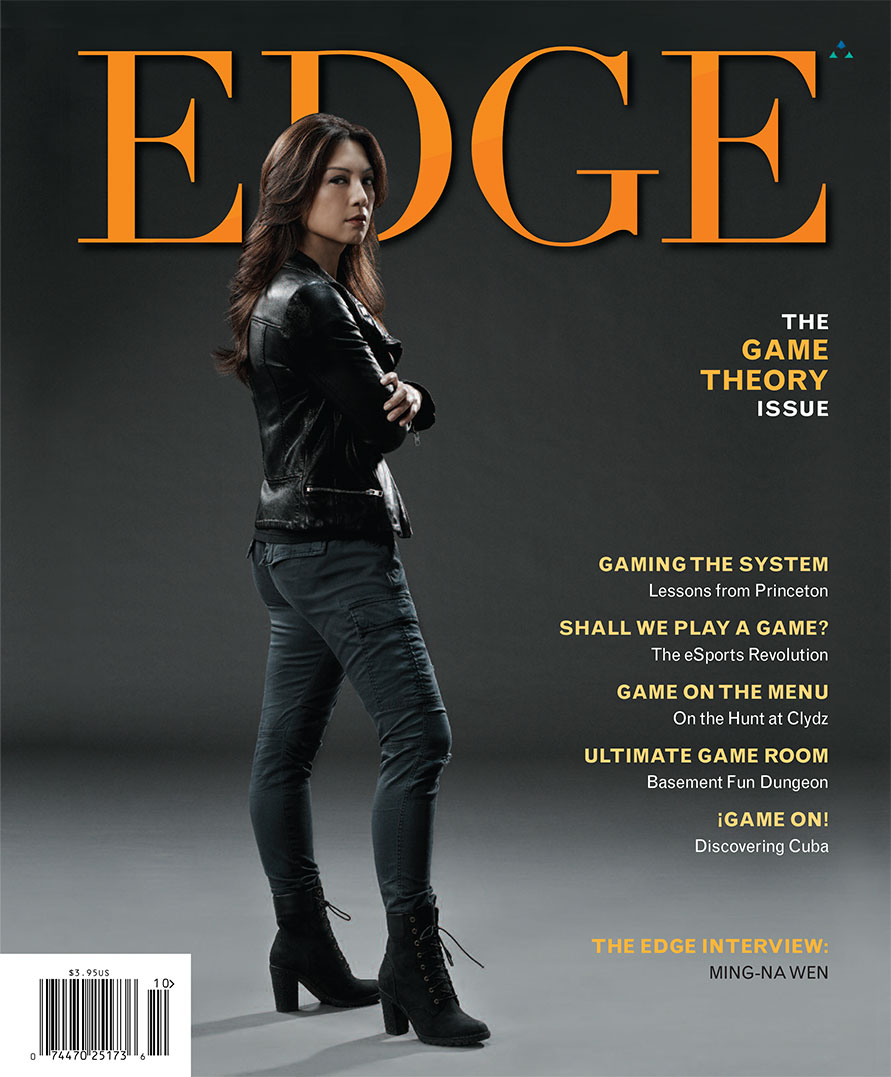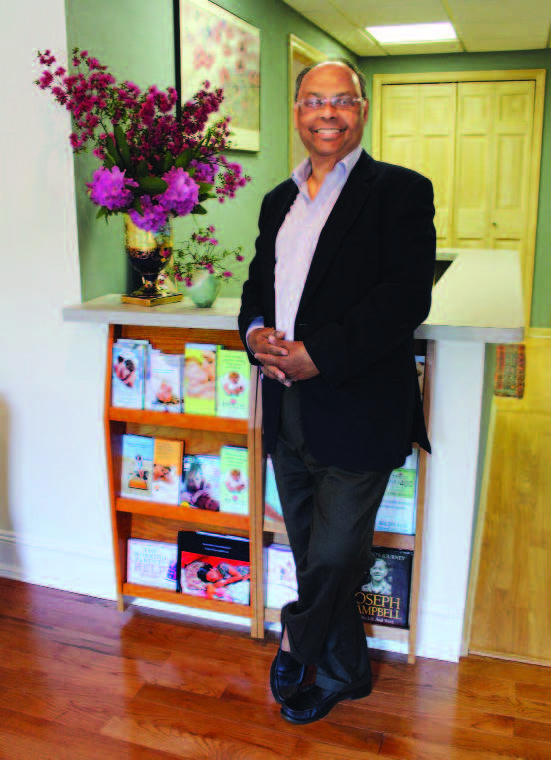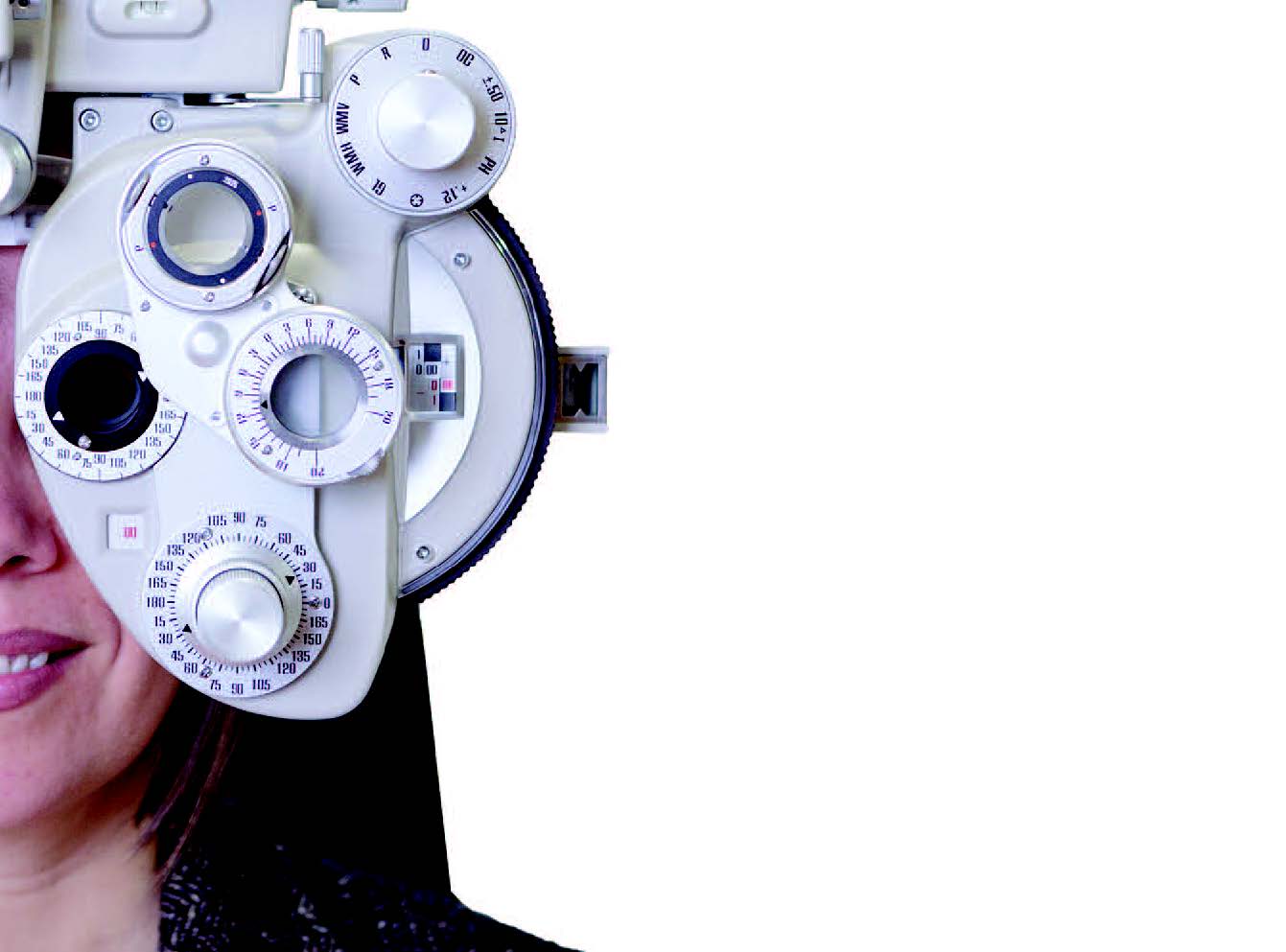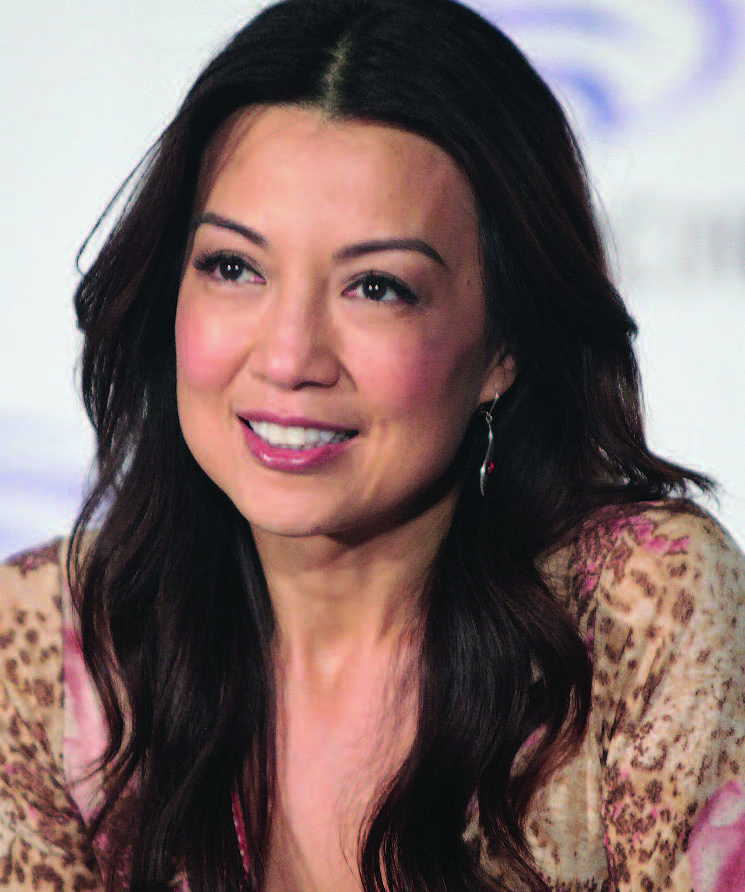Building the Ultimate Game Room
By Caleb MacLean
The suburban basement doesn’t get the love it deserves. Finished, unfinished, damp or dry—it is a launching pad for household pests and odd smells, and, in its own taunting way, a monument to unfulfilled potential. How one fills that yawning void is a matter of personal choice, personal taste and personal budget. The most personal solution? An all-out play space: aka the ultimate game room.
In newer (and grander old) homes, basements offer a great deal of square footage. Even after allowing for HVAC equipment, storage, water heaters and other appliances, there may still be 200 or more square feet that can be devoted to a fun dungeon. Often much, much more. The first order of business is to ensure the space is clean, dry, well lit, ventilated and climate controlled—in other words, finished. Fortunately, most suburban homeowners already have reasonably civilized basements.
Next comes a critically important question: What will be the true nature of this space? Presumably, the overarching goal is to promote meaningful interaction with family and friends. Which requires stepping back a bit and looking at the “culture” of your family.

www.istockphoto.com
Will this space be an extension or celebration of that culture, or is it a way of changing the game, so to speak?For example, if your family tends to gather around a monster flatscreen, then maybe you want an even more monstrous flatscreen downstairs as part of an awesome home theater array. Or maybe, just maybe, you want to change the game…and create a space that promotes some old-school interaction.
The home theater option? You can knock that out in an afternoon at Best Buy. To create a truly extraordinary fun dungeon, however, takes the kind of obsessive, time-consuming effort and financial commitment that, by its very nature, will almost certainly be a once-in-a-lifetime experience. In a perfect, totally self-indulgent world, the menu must include most, if not all, of the following items:
- Vintage Pinball Machine
- Vintage Arcade Game
- Vintage Jukebox
- Vintage Vending Machine
- Carnival Midway Game
- Foosball or Air Hockey Table
- Pool or Ping-Pong Table
If you happen to be an inveterate collector or borderline shopaholic, all the better, because this is going to require some legwork, both physical and virtual. If you need some starting points, read on…
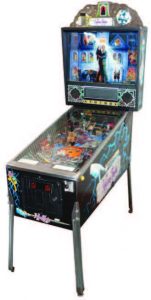 FLIPPING FANTASTIC… THE PINBALL MACHINE
FLIPPING FANTASTIC… THE PINBALL MACHINE
Having grown up in the pre-video game age, I hold that humankind has yet to invent an entertainment device that improves on the mechanical pinball machine. It combines the demanding skills of lightning-quick anticipation and hand-eye coordination with the relatively undemanding ability to stand, pull and release a spring-loaded plunger and push buttons every few seconds. Pinball first gained popularity as a gambling device, and was actually outlawed for many years. The “modern” pinball machine, with its rolling scores and rubber bumpers came on the scene in the 1960s. A new, electronic generation of machines hit the arcades in the late 1970s. The arcades themselves went the way of the dinosaur as soon as home video game systems achieved a certain level of sophistication: Why pour quarters into a slot when you can hit the reset button for free?
But pinball machines survive—even the old ones. They were built well and built simply enough so that they could be maintained and repaired without too much expense or expertise. They are now bought and sold like vintage automobiles, only much less expensive. And “tune-up” kits are available online to keep them clicking.
When purchasing a pinball machine for home use, the first decision to make is whether you want a vintage mechanical ’60s or ’70s model, or one with a computer that runs the show. The machines from the ’80s and ’90s have a lot more bells and whistles, and usually feature multi-ball play. Many of these are licensed after entertainment properties, such as The Addams Family movie franchise, starring Angelica Huston and Raul Julia. The Addams Family pinball machine happens to be the all-time best-selling pinball machine, with more than 20,000 units sold and many (if not most) still available. It was manufactured by Midway and designed by Larry DeMar and Pat Lawlor.
Lawlor, it’s handy to know, was regarded as the industry’s creative genius. If you go shopping for a machine and see his name attached to it, it’s probably fun to play. Interestingly, for many years the Holy Grail for video game designers was to make a virtual version of The Addams Family pinball. An Addams Family machine in good, working condition will run you around $7,500.
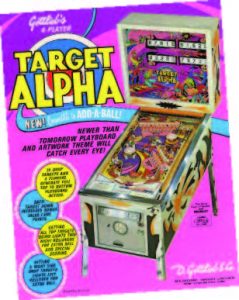 For a test of your flipper skill without all the solid-state electronics, a machine from the 1970s may be the way to go. These were the mainstays in arcades at a time when the most sophisticated video game was Pong. Their price and popularity depends on a number of variables,including the art on the back-painted glass. A challenging machine treasured among silver-ball aficionados is Gottlieb’s Target Alpha, which came out in the mid- 1970s. Its fun and challenging play field was used in several other machines.
For a test of your flipper skill without all the solid-state electronics, a machine from the 1970s may be the way to go. These were the mainstays in arcades at a time when the most sophisticated video game was Pong. Their price and popularity depends on a number of variables,including the art on the back-painted glass. A challenging machine treasured among silver-ball aficionados is Gottlieb’s Target Alpha, which came out in the mid- 1970s. Its fun and challenging play field was used in several other machines.
A well-restored example of Target Alpha can cost up to$5,000, but as with most machines of this era, prices vary based on availability and condition. With any pinball machine you purchase, it’s important to understand what’s involved in maintenance and repair. You can do most of it yourself if you have some mechanical acumen. If not, we are fortunate to live in a state where there are a number of people who both sell and service vintage machines. To get a feel for the different options take a drive down to the Silver Ball Museum in Asbury Park. It was actually featured in our Wendy Williams fashion shoot a few years ago.
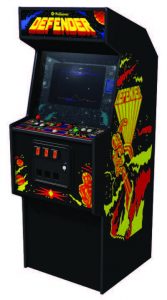 HIGH SCORE… THE ARCADE VIDEO GAME
HIGH SCORE… THE ARCADE VIDEO GAME
In the old days, the golden rule of video arcade games was “pay a quarter, die three times.” It cost money to get seriously good at Space Invaders or Pac-Man or Donkey Kong or whatever “your game” happened to be. Space Invaders gobbled up quarters at an astonishing rate. In its day, the game made more money than the first Star Wars movie—by a factor of three times! Its creator, Shigeru Miyamoto, became a video game legend. He went on to create Donkey Kong and other hit arcade games for Nintendo before turning his attention to home gaming, and was the driving force behind Wii.
 Going out and finding your favorite arcade console is fairly simple. You can track down a refurbished vintage model online, at auction or from a regional dealer. Or you can check out new arcade consoles that offer multiple “classic” games. Though eschewed by purists, they have become movie—by a factor of three times! Its creator, Shigeru Miyamoto, became a video game legend. He went on to create Donkey Kong and other hit arcade games for Nintendo before turning his attention to home gaming, and was the driving force behind Wii.
Going out and finding your favorite arcade console is fairly simple. You can track down a refurbished vintage model online, at auction or from a regional dealer. Or you can check out new arcade consoles that offer multiple “classic” games. Though eschewed by purists, they have become movie—by a factor of three times! Its creator, Shigeru Miyamoto, became a video game legend. He went on to create Donkey Kong and other hit arcade games for Nintendo before turning his attention to home gaming, and was the driving force behind Wii.
Among collectors, one of the most popular vintage arcade games is a maniacal attack-and-rescue space game called Defender. When it came out in 1981 it was predicted to be a flop because its level of difficulty was so high. It required players to watch four different parts of the screen at the same time and work controls in combinations that took hundreds of quarters to master. Of course, that turned out to be the key to Defender’s success—players became obsessed with annihilating alien spacecraft and rescuing their buddies before they plunged to their deaths. Larry DeMar and fellow pinball programmer Eugene Davis designed the game for Williams, which ended up selling more than 60,000 units. They sell for about $2,500 today.
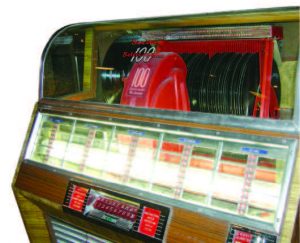
JUKEBOX HERO… MUSIC MACHINES
Your fun dungeon needs a soundtrack, of course. And what’s more fun than a vintage jukebox? These machines are not for audiophiles; what goes into them is far more important than what comes out of them. That being said, there is a burgeoning market for classic machines that have been converted to play CDs or use Bluetooth. The sound quality may be better and the maintenance simpler, but then you don’t get to track down all those favorite 45s your kid sister scratched up or your mom gave away for pennies at a garage sale.
Jukeboxes are less pieces of furniture than they are small architectural marvels. Their designs reflect their times. They set the tone for a game room, not just acoustically but visually, as well. Consequently, the choice of a jukebox will almost certainly be the most personal fun-dungeon choice you make. For most people, the model they choose harkens back to a special time or place in their lives. It may be a gleaming, chrome tabletop model like they used to have in truck stops and diners. Or perhaps an eye-popping Rock-Ola or Wurlitzer from the 1940s. The originals have gotten very pricey—often $10,000 and up—but the modern reproductions are quite nice and affordable.
If you must go Old School, then consider a sleek, mid-century Seeburg. What they lacked in color they made up for with functionality and simplicity of design. You can buy a fully restored Seeburg from the 1950s for $5,000 to$7,500.
 ICE COLD… BEVERAGE DISPENSERS
ICE COLD… BEVERAGE DISPENSERS
Beverage availability is a key component in any basement re-do. You can certainly invest a couple of hundred dollars in a small fridge and be done with it. But to stay faithful to the theme of interactivity, it’s worth considering a more traditional delivery system. Soda fountains and beer taps are what most people think of first. The home version of your basic five-flavor countertop soda dispenser—like the one at your neighborhood pizzeria—runs around$1,500. There are a lot of parts to clean and maintain, so homeowners often end up cutting a maintenance deal with the same company that services the one at the pizzeria.
The less-elegant choice of a vintage vending machine might actually make more sense in the long run. There are lots of refurbished machines on the market that keep soda and beer cans (or bottles) cold until they roll out at the push of a button. They are very simple mechanically—once you buy a restored one, you’re unlikely to have a problem with the vending mechanism. How much is a restored machine?Anywhere from $1,000 to $5,000.
Another choice for beverages is the old-time refrigerated chest. Here you want a reproduction; the originals are wildly inefficient. You open the lid, reach in, and grab a cold one. Big and colorful, they run between $500 and $1,000 depending on size and come emblazoned with your favorite old-time soda logo (especially if your favorite old-time soda is Coke).
 STEP RIGHT UP… CARNIVAL GAMES
STEP RIGHT UP… CARNIVAL GAMES
The most overlooked piece of the fun-dungeon puzzle has to be the tried-and-true carnival game. You know, the ones that look so easy…and $20 later you realize you’ve been had. Well, what better place to practice for your next visit to the midway than in the comfort of your own home? There are any number of options, some of which you can cobble together yourself if you’re handy. From a space-saving standpoint, however, you’d be wise to a) stick to the vertical ones and b) avoid games with sharp or high-velocity projectiles. Popping the balloons with darts and knocking over the milk bottles with baseballs are not wise choices in an enclosed space.
Actually, your best bet may be the most boring game on the midway, what the carnies call Fat Cats. You know this one: three or four rows of stained cloth felines that seem to be touching each other. But of course most of that is “fur,” which means your soft toss (the ball is usually misshapen or oddly weighted) must hit the cats perfectly to tilt them back. With a little practice in your basement, this is the most winnable game at the carnival—which is why the prizes in that booth are always the worst! A Fat Cat set up will run you $300 to $600.
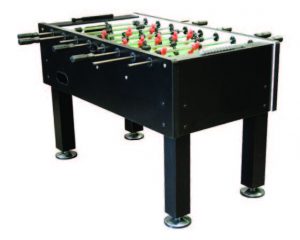 HE SHOOTS, HE SCORES… TABLE GAMES
HE SHOOTS, HE SCORES… TABLE GAMES
Feeling good about your hand-eye coordination? Then don’t go anywhere near a foosball or air hockey table. For some reason, the better athlete you are, the less athletic these games make you feel. The odd corollary to this rule is that, the more you drink, the better you get. (Or at least, the better you think you get). Still, what ultimate game room would be complete without at least one of these two classic contraptions?

www.istockphoto.com
A bit of trivia: Although it never appeared in a single episode of Downton Abbey, the tabletop soccer game we call Foosball was very popular in England in the 1920s. It has enjoyed popularity in the colonies since the 1950s, has been a staple of frat-house culture since the 1970s, and was played avidly by Chandler, Joey and Monica in Friends in the 1990s. The Foosball table is designed so that games can be played one-on-one or two-on-two. In 2002, the International Table Soccer Federation was formed with the goal of making it an Olympic sport. There are a lot of cheaply made Foosball tables on the market, so if you feel that yours will be getting a serious workout, best to invest in the ones that start around $400.
Air hockey is one of those infuriating games where kids have just as good a chance of winning as grown-ups. It is almost impossible to “square up” the round puck with the round mallets—the result being all kinds of crazy, counterintuitive caroms. The game was invented by the good people at Brunswick in the early 1970s and was immortalized in the 1976 film The Bad News Bears. Prices vary, but a good 8-foot table starts at about $700. By the way, there is an unwritten rule that the same fun dungeon cannot have both a foosball and air hockey table. Oops, now it’s written.
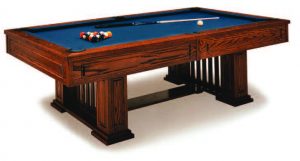 THE CLASSICS… POOL & PING-PONG
THE CLASSICS… POOL & PING-PONG
There is a similar rule about pool tables and ping-pong tables—except that you can find models that combine the two, so it’s not quite the same rule. The differences between pool and ping-pong (aka billiards and table tennis) couldn’t be more obvious. The former rewards a pensive, mathematical approach, while the latter requires quick wrists and even quicker reflexes. Depositing a pool table in a basement takes Hulkish strength and determination. Ping-pong tables fold in half and have wheels. If you have young kids, ping-pong is likely to entertain them for years. Pool certainly has its appeal, but is more of an acquired taste.
Buying a pool table is not a simple process. You definitely want quality and should be willing to pay for it. The problem is, you can pay for quality and not get it. Reviews and ratings of pool tables on the ’net sound suspiciously like they were written and planted by people in the industry, so to get the best value it’s worth doing your homework.
According to Bruce Sanderson, buyer and store manager for Pelican Sport Center in Morris Plains, the best strategy is to arm yourself with a checklist of bottom-line goals. For instance, the frame, top and cabinet of a pool table should be made of solid wood, with no veneers or laminates. Also don’t settle for anything less than a one-inch slate. And avoid cheap rubber bumpers, which produce poor rebounds. “Ken-66 rubber is what you’re looking for,” he says.
There are other telltale signs of inferior quality. The diamond sites along the sides should be actual inlays, not painted on. Pockets should be leather, not vinyl. And demand felt that incorporates a Teflon coating, which makes spills easier to clean and resists pilling. A good quality felt, says Sanderson, should be 75% wool content and 25% nylon blend, between 19 and 20 ounces per yard.
Bottom line? Be prepared to spend $2,000 to $3,500 for a table built to last. Price points can soar into the five digits for fancy designs, but keep in mind that these tables play the same; you’re paying for looks. Brunswick and Olhausen are the big brand names in the market. However, Imperial features the same construction at a slightly lower price—and the company is located right here in New Jersey.
Online reviews and ratings for ping-pong tables feel a bit more honest, perhaps because there is relatively little money at stake. The most durable tables combine a strong frame and substantial playing surface. You can easily spend over $1,000 on a top-of-the-line Kettler, but very good ones are available for $500 to $600. If you start with a pool table and decide you want ping-pong, too, you can purchase a two-piece conversion top with padding underneath for$200 to $300, depending on the finish.
Game On!

BANG FOR THE BUCK
Channel your inner Sheldon
(or Amy) with the Big Bang Theory version of Monopoly. Available at cbsstore.com.
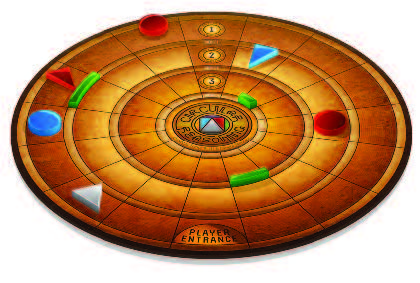
A CERTAIN RING TO IT
You don’t have to be a genius to play Circular Reasoning, but
(according to MENSA) it helps. Available at mensamindgames.com.

WHITE WALKERS WELCOMEThe Game of Thrones version
of Risk elevates war and
chaos to new heights.
Available at battleaxegames.com.
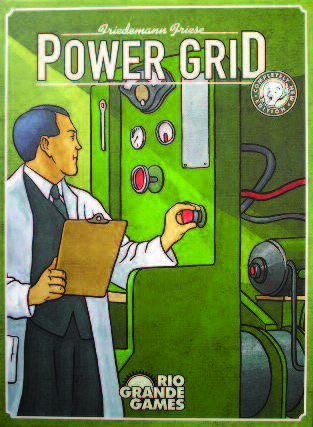
PLUG & PLAY
Strategy, logic and quick thinking are the keys to winning Power Grid, where the goal is to keep your cities from going dark.
Available at boardgamegeek.com.
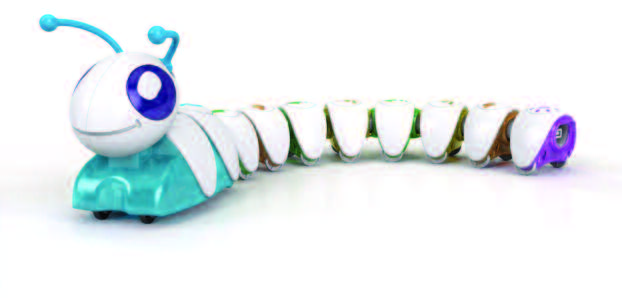
BUG JUICE
Each interchangeable link in the Code-A-Pillar teaches little ones the basics of coding.
Available at fisher-price.com.
EDGE takes you inside the area’s most creative kitchens.
 Paragon Tap & Table • Chicken with Wild Mushroom Ravioli
Paragon Tap & Table • Chicken with Wild Mushroom Ravioli
77 Central Ave. • CLARK
(732) 931-1776 • paragonnj.com
This light combination, created for the summer menu, features chicken served with wild mushroom ravioli and truffled mushroom sauté, finished with a red wine demi. We always offer fun, new combinations that showcase locally sourced ingredients.
— Eric B. LeVine, Chef/Partner
 BoulevardFive72 • Grilled “Chermoula” Organic Salmon
BoulevardFive72 • Grilled “Chermoula” Organic Salmon
572 Boulevard • KENILWORTH
(908) 709-1200 • boulevardfive72.com
This Mediterranean-inspired, signature dish is served with fingerling potatoes, roasted golden-beet purée and a whole grain mustard sauce. The salmon is sourced from the North Atlantic’s Faroese Island Fiords by Boulevard’s own seafood company.
— Scott Snyder, Chef/Owner
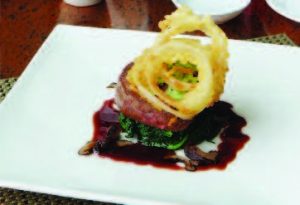 Arirang Hibachi Steakhouse • Wasabi Crusted Filet Mignon
Arirang Hibachi Steakhouse • Wasabi Crusted Filet Mignon
1230 Route 22 West • MOUNTAINSIDE
(908) 518-9733 • partyonthegrill.com
We prepare a crusted 8-ounce filet mignon served with gingered spinach, shitake mushrooms, and a tempura onion ring.
 Daimatsu • Crab Avocado Salad
Daimatsu • Crab Avocado Salad
860 Mountain Ave. • MOUNTAINSIDE
(908) 233-7888 • daimatsusushibar.com
One of my favorite creations—I prepare something different every week—Crab Avocado Salad features snow crab, chipotle jelly, avocado, cilantro, lime soy dressing with yuzu citrus foam and caviar on top.
— Momo, Chef
 Publick House • Crispy French Cut Chicken
Publick House • Crispy French Cut Chicken
899 Mountain Ave. • MOUNTAINSIDE
(908) 233-2355 • publickhousenj.com
Our crispy french cut chicken is brined overnight, then seared to give it perfectly crisp skin. It is beautifully paired with earthy shiitakes and creamy polenta. The flavor is deepened by the addition of roasted shallots, capers, and white wine. An update on a comfort food classic, the french cut chicken is perfect any night of the week.
 Luciano’s Ristorante & Lounge • Warm Goat Cheese Salad
Luciano’s Ristorante & Lounge • Warm Goat Cheese Salad
1579 Main Street • RAHWAY
(732) 815-1200 • lucianosristorante.com
The warm goat cheese salad with tender greens and a mulled cabernet dressing and toasted pine nuts is a signature appetizer at Luciano’s, where fresh ingredients and personable service in a beautiful Tuscan décor create a fine dining experience. Our menus are seasonally influenced to feature the best of what’s available in the market.
— Joseph Mastrella, Executive Chef/Partner
 Morris Tap & Grill • Pan Seared Sea Bass
Morris Tap & Grill • Pan Seared Sea Bass
500 Route 10 West • RANDOLPH
(973) 891-1776 • morristapandgrill.com
This light dish, which incorporates heirloom tomatoes, exemplifies how we showcase local produce. Pan-seared sea bass is served with tomato confit and tomato broth, and served over corn and sweat pea risotto.
— Eric B LeVine, Chef/Partner
 Boulevard Seafood Company • Jumbo Lump Crab Cakes
Boulevard Seafood Company • Jumbo Lump Crab Cakes
49 West Main Street • SOMERVILLE
(908) 722-0600 • boulevardseafoodcompany.com
Hand-made cakes using the freshest jumbo lump crab from our own market, seared and served atop a “succotash” featuring Jersey fresh corn, finished with a decadent caper-basil butter sauce. They can also be purchased to cook and serve at home from our retail market, open during restaurant hours!
— Scott Snyder, Chef/Owner
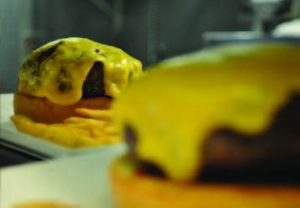 Spirit: Social Eatery and Bar • Double Cheddar Infused Burger
Spirit: Social Eatery and Bar • Double Cheddar Infused Burger
250 Morris Ave. • SPRINGFIELD
(973) 258-1600 • mclynns.com
It doesn’t get better then a double cheddar infused burger from the new Spirit: Social Eatery and Bar.
— Mark Houlker, Chef
 Arirang Hibachi Steakhouse • Volcano Roll
Arirang Hibachi Steakhouse • Volcano Roll
23A Nelson Avenue • STATEN ISLAND, NY
(718) 966-9600 • partyonthegrill.com
Hot-out-of-the-oven, crab, avocado and cream cheese rolled up and topped with a mild spicy scallop salad.
 Galloping Hill Caterers
Galloping Hill Caterers
Galloping Hill Road and Chestnut Street • UNION
(908) 686-2683 • gallopinghillcaterers.com
Galloping Hill Caterers has been an incredible landmark for nearly sixty years. We pride ourselves in delivering “over the top” cuisine, impeccable service and outstanding attention to detail. That is the hallmark of our success! Simply, an unforgettable experience. Pictured here is one of our crepes flambé that really creates lots of excitement!
 The Manor • Seared Atlantic Salmon with Almond Couscous
The Manor • Seared Atlantic Salmon with Almond Couscous
111 Prospect Avenue • WEST ORANGE
(973) 731-2360 • themanorrestaurant.com
Fresh and light, this seared Atlantic salmon with almond couscous, asparagus tips, and a roasted tomato beurre blanc is full of bright, rich flavors. Our range of creative contemporary cuisine offered alongside classic Manor favorites ensures that every guest can find something special on their next visit.
— Mario Russo, Chef de Cuisine
Will your kid’s summer on the sofa translate into a six-figure salary…or college scholarship?
By Mark Stewart
That’s it…no more video games! What parent of slothful teenagers hasn’t issued this threat? And yet, here we are, at the dawn of a new era, when low-energy “gamers” are increasingly on the radar of higher education. More and more colleges are assembling “eSports” teams to carry their school colors into virtual battle, in hopes of securing much-coveted championship banners—which they aim to fly side-by-side with those won by traditional sports teams. A handful of schools are even offering scholarships.
Has the world gone completely mad? Have you just discovered a way to cover college tuition?
Maybe. And, again, maybe.

www.istockphoto.com
It doesn’t take much of a business mind to grasp what a huge industry video gaming has become. Rare is the young man who hasn’t gone down the rabbit hole playing some online battle game only to emerge, unshowered, hours or days later with a temporary case of PTSD. Multiply that by, oh, half a billion connected adolescents and 20-somethings worldwide, and you get a sense of how big the market and its potential is. The actual numbers are a bit foggy, but most experts agree that somewhere between 600 and 700 million people participate in online games, which equates roughly to 40 percent of the planet’s digitally connected population. More than 200 million people actually sit in front of their computers and watch others play these battle games, like an NFL fan watches the Jets or Giants. One wonders how anything in the non-online world gets done, or how dating is even possible.
On college campuses across North America, eSports teams have been representing their schools unofficially for years. There are several leagues that hold competitions and tournaments for players from more than 350 colleges and universities. Most are the digital equivalent of “club” teams—sanctioned and supported, but not part of an official athletic program. Young men and women (but mostly men) who were slumped in dorm rooms gaming with their buddies, got good enough to compete online against their peers at other schools, and the video game industry was all too happy to create an infrastructure for them to do so.
The school that changed the game was Robert Morris University, in Chicago. In 2014, RMU officially added eSports to its athletic program. It began recruiting the country’s best League of Legends players with the lure of partial scholarships. The move paid immediate dividends: Robert Morris was featured on a 60 Minutes segment, bringing the university unprecedented recognition. Several small schools followed suit and, in 2016, UC Irvine became the first large Division I school to offer eSports scholarships. Irvine, a PAC-12 university, has gone all-in, doling out enough scholarships to build two 5-player League of Legends teams. And this fall, top gamers (both scholarship and non-scholarship) will be able to compete in a new 3,500 sq. ft. facility with 80 computer terminals.
Tom Parham, Irvine’s Vice Chancellor for Student Affairs, says that the school’s eSports program will be built on competition, academics, entertainment and community. “We hope to attract the best gamers from around the world,” he says, adding that, “our academic programs in computer-gaming science, digital arts, computer science, engineering, anthropology, law, medicine, neuroscience and behavior create a strong foundation for research and inquiry related to gaming.”
If history tells us anything, it’s that where one PAC-12 Conference school goes for glory, the others soon follow. By the end of 2017, the conference almost certainly will have absorbed eSports teams and tournaments into its existing athletic structure, meaning that scholarships from other PAC-12 schools won’t be far behind. Those schools, by the way, include Stanford, USC, UCLA and UC Berkeley. That means you may soon be screaming at your kid to stay on the couch and keep playing—otherwise he or she won’t get into Stanford. So yes, the world has gone a little mad.
Then again, don’t get your hopes up. Your child may be a video game prodigy, but the moment top colleges begin offering full scholarships, the competition is going to get nasty. Right now, the world’s best gamers don’t even bother going to college. They are plucked out of their parents’ basements by heavily sponsored eSports teams to compete in international tournaments as professional gamers. They earn salaries and endorsement dollars that can easily get into six figures. Their team owner houses, clothes and feeds them and hires coaches and trainers to keep on top of them, and to keep them on top of their games. Typically, team members live together under one roof and practice as a team 10 to 12 hours a day, six days a week. This is called the “gaming house” model. On some teams, players live separately but meet in a common location for practice. This is called the “office” model.
Either way, when they enter a tournament, they function like a well-oiled machine. By the time every dollar is accounted for, a sponsor’s investment (sponsors include major brands such as Monster, Hyundai and Geico, as well as various computer companies and even some venture capital groups) can top a million dollars annually.
Morgan Spurlock, who nearly killed himself eating three meals a day at McDonald’s for the film Super Size Me, immersed himself in the eSports world for a recent episode of Inside Man on CNN. He spent time with LA-based Counter Logic Gaming (aka CLG), the 2015 North American champions, playing and training with the likes of Yiliang Peter Peng (right), a 23-year-old born-and-bred Californian who goes by the handle “Doublelift” in the eSports world; CLG’s general manager, Matthew “MaTTcom” Marikian describes him as the LeBron of gaming. Spurlock wasn’t shocked by the level of skill demonstrated by the CLG players. However, he was surprised by the contributions of the grown-ups in the room.
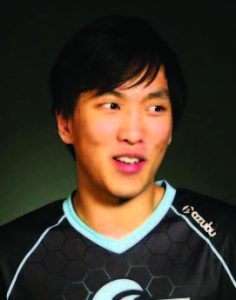
Courtesy of Counter Logic Gaming
“It’s incredible to see the amount of coaching Courtesy of Counter Logic Gaming that goes into being an eSports athlete,” he said during his report. “It’s just like being any other type of athlete.”
Tadayoshi “Hermit” Littleton confirms the huge role management plays in the formation of a world-class team. An avid player in college during the pre-scholarship days, he became the coach for NRG eSports in 2016 after guiding Spanish-based Origen to an impressive string of first- and second-place finishes in European League of Legends competition. NRG is the third pro team Littleton has assembled.

Courtesy of Origen
“There are two types of players we look for,” Littleton (left) explains. “One can do everything at the highest level. Their talent is really obvious. We also look for players who are very team-oriented. They can be harder to identify from their solo scores, but with my experience I am able to spot them.”
Littleton says communication is the most critical component in building a team, and considers this his specialty as a coach. Getting the players to mesh as he likes can take about a month, but sometimes the best individual players find it difficult to play a true team game, which can slow down the process.
“It depends on how much of a knowledge sponge they are,” he says.
Before college scholarships changed the game, so to speak, many eSports player turned pro, pocketed enough cash to pay for college and then went back to school—much to the relief of their parents. Top-tier gamers tend to be pretty intelligent, so for most of their lives, higher education was a foregone conclusion. Imagine the parent whose son or daughter announces that college is off the board, and that they plan to become professional game-players. Doublelift’s parents didn’t speak to him for three years, even though he may have made close to a million dollars during that time.
So what does this all mean? Probably that your parenting skills need to keep up with your child’s eSports skills. The better they are at playing their games, the more prepared you may need to be to help them make the right decision—now and come college time.
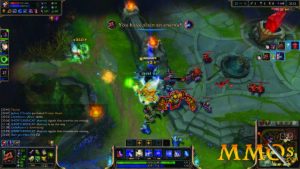 LoL
LoL
League of Legends—LoL or just plain League, for short—is the multiplayer online battle game favored by a high percentage of eSports teams. Each player controls a character called a champion, who has unique abilities that hopefully mesh with those of other champions on the same team. The goal is to destroy an opponent’s fiercely defended Nexus (think Capture the Flag), with each champion gaining strength he-she-it fights his-her-its way through the game. A five-player LoL team can be five friends or classmates in the same room, or complete strangers at consoles thousands of miles apart. About 30 million people play League of Legends. A day.
John Nash, Ralph Kramden and Game Theory in New Jersey
By Luke Sacher
Sorry, Harvard and Yale. When it comes to Game Theory, you’re just safety schools. The Einsteins at Princeton basically wrote the book used by everyone from economists and multinational corporations to defense strategists and Survivor contestants. Which, for all practical purposes, makes New Jersey the birthplace of Game Theory. Most of us were introduced to the idea of Game Theory in the 2001 film A Beautiful Mind, starring Russell Crowe as Princeton professor John Nash. Some may remember the Matthew Broderick vehicle, War Games (“Shall we play a game?”), which introduced the concept to moviegoers as far back as 1983.

Courtesy of the World Economic Forum
Whether you realize it or not, if you happen to be the parent of a college-bound teenager, Game Theory is coming into play again, this time in a much more personal way. Both the application process and admissions process involve the fundamentals of high-stakes probability that were originally hammered out by three Princetonians: John Von Neumann, Oskar Morganstern and Nash (above)—right here in the Garden State. More on these three on page 78.
In a twist that this trio would no doubt appreciate, many colleges now invite young applicants to expound on Game Theory in their essay options. So let’s just say that it’s good to know what you’re getting into.
Game Theory is the application of mathematical probability and symbolic logic to the understanding of rational human behavior in interactive situations between two or more “players.” It takes how we expect individuals to behave, or to make decisions, and then adds the element of interaction with others who are also seeking to maximize their benefits by acting rationally. In other words, Game Theory is no game at all. Rather, it is a tool for analyzing situations where each player is exercising “strategic interdependence”—calculating actions and outcomes based on the decisions of others in the game.

www.istockphoto.com
THE ADVERTISER’S DILEMMA
In its most basic form, Game Theory helps to understand situations that are familiar to all of us. Take the “Advertiser’s Dilemma.” Two companies producing a similar product (let’s say Hershey and Nestlé and chocolate bars) are in competition with each other for customers. The maximum payoff for both companies happens if both do not advertise, since they are saving the expense of advertising. The minimum payoff for each company happens if it chooses not to advertise and the rival company does—thus cratering its market share. So both companies decide to advertise, dividing market share more or less evenly while squeezing out a small profit.

www.istockphoto.com
Even if Hershey and Nestlé were to hammer out a gentleman’s agreement not to advertise, the two companies would likely operate in a state of sustained paranoia that the other might betray them and advertise (which is no way to run a business). The lesson Game Theory teaches us in this case is that expending resources and not getting much in return is preferable to not expending resources and risking getting even less. It’s akin to the spiraling logic employed by Ralph Kramden when he launches into one of his “You know that I know that you know that I know…” soliloquies in a Honeymooners rerun.
The difference between Ralph Kramden and John Nash (who, ironically, were contemporaries) is that Nash was able to express this idea mathematically and arrive at an elegant, logical conclusion—for which he eventually won a Nobel Memorial Prize in Economics, in 1994. The Nash Equilibrium, his solution concept for non-cooperative competition, is now employed in one way or another in almost every aspect of global business.
 GAMING THE SYSTEM
GAMING THE SYSTEM
Although all roads leading to college run through Princeton (where SATs, ACTs, Achievement and Advanced Placement exams are scored by the College Entrance Examinations Board), only 6 percent of the 30,000 or so kids applying to New Jersey’s top school will get in. That leaves a lot of smart kids looking elsewhere, and this is where a firm grasp of Game Theory can be helpful.

www.istockphoto.com
If your kids can write with imagination and authority on the topic of Game Theory in a college essay, more power to them. Not only have they managed to stand out in a crowded field, they have made the job of the admissions officers reading that essay easier. Which increases their chances of landing on the acceptance pile. If that sounds
like an example of Game Theory within Game Theory, then you’re getting it! The fact is that—because of the sheer volume of applications they now receive—college admissions departments are applying Game Theory to their acceptance strategies.
Let’s say that a school has 10,000 qualified applicants for 1,000 openings in the incoming freshman class. How many should it accept, given that an unknown percentage will inevitably decide to attend another college to which they have also been accepted? If the college accepts 3,000 and half show up for orientation, the extra 500 kids will overwhelm the school. But what if, of those 3,000, only 10 percent decide to attend? With 300 incoming freshmen instead of 1,000, a financial crisis would almost certainly ensue.
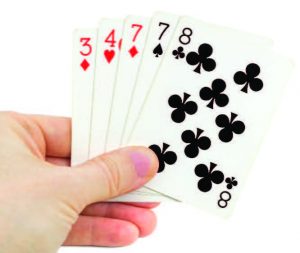
www.istockphoto.com
In this game, one of the players is the college and the other is the student. Both are attempting to make decisions under conditions of uncertainty and incomplete or “hidden” information. It’s been described as a chess match, but it’s not. Poker is the game here. And in poker, you don’t always need the better hand to win—you can also win by maneuvering your opponent into a bad decision.
The college is trying to reduce uncertainty and achieve its goals by convincing the most qualified applicants to show up on their campus instead of someone else’s, even if that other school might represent a better choice. The win here for the school is filling the 1,000 spots with the most talented group of freshmen possible. The student, of course, is trying to wangle as many acceptance letters as he or she can, in order to go to the best possible college. The win for the teenager is gaining acceptance to that coveted “reach” school, ideally under the best financial circumstances. Keep in mind, for every kid that gets into a reach school, there is probably a more qualified student who is rejected, often because the admissions department “knows” the better student is headed elsewhere anyway. Which is why no reach school is ever a slam-dunk rejection.
One aspect of Game Theory that has come into play in a big way on the admissions side is the extensive wait listing of qualified applicants. This strategy gives schools more time to understand and evaluate the pool of prospective freshmen, and to create more certainty in achieving bottom-line goals. Of course, our kids are bright enough to know the correct response: Apply to 30 schools!
It’s a solution both Kramden and Nash, in their own utterly unique and ingenious ways, would probably appreciate.
OUTSTANDING
Who has the power in the college entrance process? The more skilled player. A recent article in the Wall Street Journal offered some thoughts on gaming the admissions system:
- Play the Oboe or the Harp, and play it well. The old ideal of the All-American athlete/Latin scholar/musical-comedy star is long gone. Schools today want to see a lot of talent in a specific field, though exactly what they’re looking for varies. Colleges are looking more for a well-rounded class than well-rounded freshmen.
- Spend a summer at the school of your choice. A growing number of schools, like Brandeis and Harvard, are trying to get to know potential applicants by offering summer programs. Some let high school kids take college courses and earn college credit.
- Move to Idaho. Seriously. Colleges and universities want geographic diversity.
- Get a life. A survey by the National Association for College Admission Counseling found that extra-curriculars now rank ninth in importance. Grades in college prep courses were #1. Colleges like to see students who take time to develop into more complete human beings, including those who take a gap year after high school to explore the world.
GAME ON
There are four core elements of all games:
1) Players (sometimes called agents)
2) Information available to each player, whether complete or incomplete, symmetric (common to all players) or asymmetric (unique to individual players)
3) Actions available to each player at each “move,” whether simultaneous or sequential, made by the players based on their information
4) Payoffs (positive or negative) available to each player for each outcome of their actions
A game theorist typically uses these elements, along with a solution concept of their choosing (such as the Nash Equilibrium), to deduce a set of equilibrium strategies for each player. These equilibrium strategies help determine a stable state in which either one outcome occurs or a set of outcomes occur with known probability. If these strategies have been correctly calculated, no player can profit by unilaterally deviating from his or her strategy. However, where Game Theory falls apart is when one or more players acts irrationally. In poker, it’s not the end of the world.
In thermonuclear warfare, it is.
NEW JERSEY’S “BIG THREE”

Courtesy of the Mises Institute
Oskar Morgenstern
(1902-1977)
Morgenstern grew up in Vienna, Austria and graduated from the University of Vienna in 1925. After earning his doctorate in political science, he succeeded Nobel laureate economist Friedrich Von Hayek as director Courtesy of the Mises Instituteof the Vienna Institute for Business Cycle Research, and held the position until the Nazi annexation of Austria in 1938. Fortunately, he was visiting Princeton University at that precise moment, where he met and befriended John Von Neumann. The two began a six-year collaboration at Princeton that would result in the publication of The Theory of Games and Economic Behaviorin 1944, which is universally recognized as the first book on Game Theory.
John Von Neumann
(1903-1957)
Von Neumann (below left, with physicist J. Robert Oppenheimer) was born on December 28, 1903, in Budapest, Hungary. By the age of 8, he was familiar with differential and integral calculus, and published his first paper at the age of 18. He earned his first degree at the University of Budapest in 1925, in Chemical Engineering,
books while operating his vehicle, occasioning numerous arrests, as well as accidents. Von Neumann was not only one of the fathers of Game Theory, he also worked on the mathematical formulation of quantum mechanics, made invaluable contributions to the Manhattan Project, and was involved in the development of the first programmable digital computers.
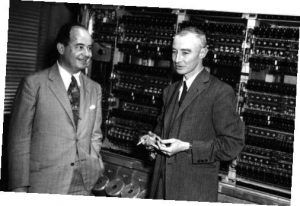 John Forbes Nash, Jr.
John Forbes Nash, Jr.
(1928-2015)
Nash was born June 13, 1928 in Bluefield, West Virginia, where he demonstrated his exceptional talent for mathematics as early as age 10. He was accepted to Carnegie Tech on a full Westinghouse scholarship and graduated at age 19 with a Master’s Degree in Mathematics. Nash then won a graduate studies scholarship from Princeton University in 1948. From the early 1950s to the mid-1980s, Nash suffered tortuously from extreme bouts of psychosis, and was often hospitalized and institutionalized. Forty-four years after completing his revolutionary 27-page doctoral dissertation at Princeton, he shared the 1994 Nobel Memorial Prize in Economic Sciences with game theorists Reinhard Selten and John Harsanyi. His theories and algorithms continue to be used today in the fields of economics, computing, politics, accounting, military strategy, and even evolutionary biology. On May 23, 2015, Nash and his wife Alicia were killed in an accident while riding in a taxi on the New Jersey Turnpike.
 Editor’s Note: Luke Sacher has written for EDGE on the greatest disaster films and Baby Boomers’ beloved dangerous toys. He spent countless hours researching this story, watching online lectures by distinguished professors and reading several graduate theses.
Editor’s Note: Luke Sacher has written for EDGE on the greatest disaster films and Baby Boomers’ beloved dangerous toys. He spent countless hours researching this story, watching online lectures by distinguished professors and reading several graduate theses.
Luke believes that Nash’s contributions to Game Theory offer keen insights on human behavior, however he says that basing the world economy on the ideas of a paranoid schizophrenic worries him sometimes.
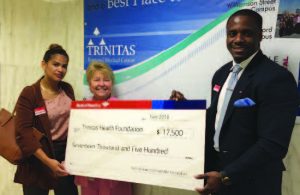 TRINITAS HEALTH FOUNDATION RECEIVES $17,500 FROM BANK OF AMERICA!
TRINITAS HEALTH FOUNDATION RECEIVES $17,500 FROM BANK OF AMERICA!
Trinitas Health Foundation received a $17,500 grant from Bank of America to support the Health Careers Exploration Program, a constructive and aspirational after school and summer initiative that mentors students on achievable career options, teaches them the importance of voluntarism and motivates them to stay in school. By offering career guidance and hands-on career exploration opportunities, the program has unlocked valuable economic opportunities for thousands of students from the greater Union County region, almost all of whom are from Elizabeth and from low-income families.
Trinitas currently employs 83 program alumni and has employed several hundred alumni throughout the program’s history. With at least 8 MDs, 67 nurses, and a number of dentists, pharmacists and successful alumni in every type of healthcare and non-healthcare program proves that having faith in inner city students and giving them the right tools will help them to rise above the obstacles that many of them face.
 ARE YOU UP TO THE CHALLENGE?
ARE YOU UP TO THE CHALLENGE?
Trinitas Regional Medical Center is in the midst of a Capital Campaign to raise $18.7 Million to expand our Emergency Department and dramatically improve its ability to manage extremely high patient volume and acuity levels. Our plan will nearly double the number of patient beds, provide immediate access to advanced diagnostic equipment and create environmen-tally appropriate units for pediatric, elderly, behavioral health and non-emergent patients. With this expansion progressing on time and on budget, we are very happy to say we are on track to unveil a brand new ED in 2017.
We recently received some very exciting news about the campaign: The JC Kellogg Foundation has awarded us a $4 million challenge grant, meaning that all gifts over the next three years will be matched dollar-for-dollar until we reach $4 million! This is a wonderful time to support the patients of Trinitas and double the value of your gift.
Please join us and make a gift today! Your gift will be matched by the JC Kellogg Foundation, and will help us create a BIGGER, BETTER, STATE-OF-THE-ART Emergency Department for all of our patients! To make a gift to the Emergency Department Capital Campaign, please contact Nadine Brechner at nbrechner@trinitas.org or Rob Eccles at reccles@trinitas.org or call the foundation office at (908) 994-8249.
A NIGHT OF JAZZ TO REMEMBER…
If cool jazz is your groove, join Trinitas Health Foundation’s Jazz Celebration featuring David Sanborn on Thursday, November 17th. Enjoy a light buffet supper at NJPAC followed by the concert at 8 pm. Orchestra seating, advance parking, and a memento of the evening are included. What a cool, sweet treat of an evening! Contact Nadine Brechner (908) 994-8249 or by email at nbrechner@trinitas.org if you’d like to purchase a ticket(s) or discuss sponsorship opportunities.
 Alzheimer’s Breakthrough
Alzheimer’s Breakthrough
Doctors know that the main culprit in the onset of Alzheimer’s Disease is a sticky protein called beta amyloid, which accumulates in the brain as synapse-destroying plaque. How it collects there was something of a mystery until Harvard Medical researchers found evidence that this substance forms as protection against pathogens that cross the blood-brain barrier, forming a “cage” around them. The problem seems to be that the beta amyloid stays in the brain after the invading bacteria has been eliminated. The Harvard team believes that further research could reveal ways to treat or even prevent Alzheimer’s.
 No Blind Mice
No Blind Mice
Whoever wrote the song “Three Blind Mice” probably never imagined that, one day, they would regain their sight. Last month, the journal Nature Neuroscience reported that Stanford University scientists reactivated the optic nerve cables of a blind mouse, reestablishing the link between eye and brain. In a functioning eye, photoreceptors in the back of the retina send information to the brain through axons, whic act like electrical wires. When axons in the brain are damaged- from injury or disease- it had been assumed that they don’t regenerate. The Stanford project proved otherwise. Researchers were able to reactivate the retinal pathway with a combination of high-contrast visual stimulation and biochemical manipulation.
 Large, But In Charge
Large, But In Charge
Many obese mothers-to-be are resigned to producing overweight children. A new study, funded by the Eunice Kennedy Shriver National Institute of Child Health and Human Development, shows that there is something expecting moms can do during pregnancy to tilt the odds in their favor. Researchers found that adequate maternal folate appears to mitigate the effects of a mother’s obesity on her child’s health. An essential B vitamin, folate is known to reduce a fetus’s risk for malformations affecting the brain, spine and spinal cord. In this study, children of obese mothers with adequate folate levels had a 43% lower risk of obesity than children of obese moms whose folate levels were considered too low.
 Do Opiods Ease Pain?
Do Opiods Ease Pain?
The short answer is Yes. However, the longer-term impact of painkillers such as Oxycontin and Vicodin is less clear. Neuroscientists at the University of Colorado conducted a lab study in mice that suggests that painkillers may actually prolong pain. It took mice treated with morphine up to 12 weeks to recover from chronic nerve pain, while untreated mice recovered in an average of five weeks. The researchers suspect that opioids reshape the nervous system in ways that amplify pain signals long after an injury (or illness) heals, prolonging discomfort.
 Waist-Reducing Carbs?
Waist-Reducing Carbs?
“Pasta doesn’t make you fat,” celebrity chef Giada de Laurentiis likes to say. “How much pasta you eat makes you fat.” Well, now she’s got some science to back her up. Researchers from the Mediterranean Neurological Institute studied more than 20,000 people throughout Italy, comparing their pasta intake, body measurements and other criteria. They concluded that consuming pasta in moderation (traditionally Italians eat a small serving as an opening course) appears to contribute to a healthier body mass index and better waist-to-hip ratio. The results of the study do not prove that pasta helps you lose weight—only that the carbs it contains are not unhealthy. It probably doesn’t hurt that many in the study ate foods associated with a Mediterranean diet. They are, after all, Mediterranean.
Abu Alam joins the Trinitas OB/GYN team.
By Erik Slagle
Dr. Abu Alam, MD, PA is contemplative, looking back on his distinguished career as he sits in the waiting room of his office, which was once the parlor of a private home that is more than 140 years old. He’s looking ahead to the upcoming wedding in Chicago of his youngest daughter, thinking of Ramadan and also settling into his new role as Interim Chairman of Obstetrics/Gynecology at Trinitas Regional Medical Center in Elizabeth. Trinitas welcomed Dr. Alam to its team in April, and he quickly made an impression on both the faculty and the hospital’s patients.
Elizabeth’s considerable Haitian population gives Dr. Alam the opportunity to relate stories from his work serving in Haitian clinics where there is often no electricity and procedures are sometimes performed by flashlight. He dedicates several weeks each year to volunteering in Milot, Haiti as part of his commitment to charitable work in the impoverished island nation.
A doctor who has given much of his free time to charitable pursuits in underserved communities around the world, Dr. Alam is entering the next phase of his career, where he can serve as a teacher and mentor to the next generation of practitioners at the hospital while still working with OB/GYN patients and bringing new lives into the world.
“I believe I’m destined to do certain things in life,” Dr. Alam
says as he looks out the window onto Springfield Avenue. “I’ve delivered more than eight thousand babies, sometimes close to three hundred a year. When I go to bed at night, I know that I’ve given my patients the best care I can, whether that’s here in New Jersey, or in Haiti. My first priority has always been to my patients. Money was never the goal.”
Return to His Roots
Dr. Alam has also made it his mission to provide medical services to residents of his home country, Bangladesh. His work in Haiti inspired him to gather a team of like-minded medical professionals and open Nandina General Hospital, the only medical care for miles around its village. The village is about four hours by car from where Dr. Alam was born.
“I know that in many parts of Bangladesh malnutrition and childbirth are areas where not enough attention can be paid by the limited number of doctors available,” he says. “The patients who we treat at Nandina General Hospital might otherwise not have any treatment options available to them. We work with equipment donated by New Jersey medical centers to bring current, modern medical practices to people who truly need them.”
For his philanthropy and service, Dr. Alam was awarded the Ellis Island Medal of Honor in 2006; presented annually to immigrants who have made significant contributions to America’s heritage. Dr. Alam also serves as Chairman of the Teddy Bear Foundation, which provides support for patients stricken with achondroplasia—commonly known as dwarfism—for the past 20 years. These children often require multiple surgeries and painful recovery periods to help alleviate the condition, and the Teddy Bear Foundation raises funds to help provide the treatment and after-care needed.
Vanessa Loeffler, who is a long-time member of the staff at Dr. Alam’s Summit office, established the Teddy Bear Foundation more than 20 years ago after her daughter Theodora was born with the condition. Loeffler credits Dr. Alam with playing a key role in helping further the Foundation’s mission.
“Dr. Alam has been instrumental in helping us grow the Teddy Bear Foundation,” she says. “His work on behalf of children like Theodora has made such an incredible impact on our ability to help families who are caring for people with this condition.”
Productive Partnership
Throughout his life, Dr. Alam has believed fate has led him to his accomplishments on professional and personal planes. As he sets out on his next professional endeavor as a member of the Trinitas team, the communities the medical center serves are fortunate to be coming under his care and compassion.
“For many years I’ve heard about Trinitas’ reputation for outstanding outcomes and patient satisfaction,” Dr. Alam says. “I look forward to being a part of this wonderful team and to working closely with the residents and students. I expect I can learn as much from them as they may hopefully learn from me.”
It is one thing to have practiced medicine for almost five decades without losing your ardor and drive to serve patients. It’s another to give so selflessly of your time and energy to help those in need around the world. To be able to balance both of those while also raising four children—and maintaining a perspective on the things in life that are truly important—is something else altogether. It’s a rare amalgam to find in a person who has seen and done as much as Dr. Alam.
And it’s a great victory for Trinitas Regional Medical Center to welcome him to their team.
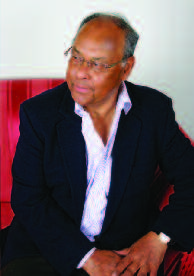
Abu Alam, MD, PA
240 Williamson St., Suite #304 Elizabeth, NJ
908.282.2000
128 S. Euclid Avenue Westfield, NJ
908.928.1234
Presbyopia…Don’t have it? Just wait.
By Mark Stewart
Evolution and genetics have blessed a little more than half of our population with excellent distance and reading vision. Unfortunately, the human eye is not built for the long haul. As we age, our lenses get a little harder and the muscles that help us focus on near objects become a bit less dependable. Around 40 years old, even people with “perfect” vision (or surgically corrected vision) begin to notice that they don’t see up-close as well as they used to.
Welcome to the world of presbyopia…the only affliction that affects every eyeball on earth.
“For people who’ve always had good vision, presbyopia kind of comes as a shock and disappointment,” says Dr. Joel Confino, co-founder of The Eye Care & Surgery Center, a three-office practice in Central New Jersey. “Their eyes have always performed. They don’t think it’s going to happen to them. Now they need more light or have to hold things further away. They come into the office and say, ‘My eyes have gone bad!’ I’m still surprised by how many people are surprised by it.”
According to Dr. Confino, who was the first in the area to offer laser surgery back in 1995—and whose practice treats the entire range of eye diseases—presbyopia also affects people who wear contact lenses, and people who underwent LASIK surgery in their 20s or 30s.
To the layperson, presbyopia sounds a lot more serious than it actually is. Where does the term come from?

www.istockphoto.com
“It’s actually derived from the Greek word for older person, presbys, and ops, the word for sight,” explains Dr. Jaime Santamaria of the Santamaria Eye Center in Edison. “So it translates roughly to ‘the way an older person sees.’ Interestingly, the word Presbyterian shares the same root. A presbyter was a name for an older minister in the Greek Orthodox Church.”
TREATMENT OPTIONS
The simple fix for people with otherwise good vision is a pair of reading glasses. For current glasses-wearers, the solution is often a pair of bifocals. Often, there is a natural resistance to both, Dr. Santamaria points out.
If you’ve never worn glasses, the thought of being tethered to a cheap pair of CVS readers may be unacceptable. If glasses are already a part of your life, the idea of switching to bifocals may be your personal line in the sand where aging is concerned. And that’s totally understandable. Ben Franklin, the man who invented them, took his off to pose for the $100 bill.
Refractive surgery has been a viable option to correct presbyopia for more than two decades, and has gone through significant improvement over that time. In most cases it is a better option than LASIK, especially for patients over 40. Refractive procedures replace the eye’s crystalline lens with an intraocular lens, similar to what happens in a cataract operation. In some cases, patients who undergo these surgeries see better than they ever did. Unfortunately, this type of procedure is not typically covered by insurance.
A relatively recent option for people who have never experienced vision problems, or who have undergone Lasik, is the KAMRA inlay, which was approved by the FDA about a year ago. It restores the eye’s ability to read without detracting from distance vision.

www.istockphoto.com
“It is an implant in the cornea,” Dr. Confino explains, “smaller and thinner than a contact lens. It restores reading power by creating a ‘pinhole effect’ that gives great depth of focus in one eye—much the way a camera’s aperture does, or what happens when you squint to see something more clearly.”
Although new in the U.S., the procedure has been used in Europe and Asia for a decade. During that time, both the device and the surgical procedure used to implant it have improved and, in the year it has been available here, both have continued to evolve, says Dr. Confino, who offers KAMRA in his practice. He says the quality and results are consistent with the other procedures his group does.

Joel Confino, MD
The Eye Care & Surgery Center Westfield / Warren / Iselin newjerseyvision.com

Jaime Santamaria, MD, FACS Santamaria Eye Center
104 Market Street
Perth Amboy, NJ 08861 santamariaeyecenter.com
Both Dr. Santamaria and Dr. Confino stress that presbyopia is not a disease, and therefore there should be no fear on the part of patients in being diagnosed.
Editor’s Note: Dr. Confino is a Yale University graduate who studied medicine at the Albert Einstein School of Medicine in New York. Dr. Santamaria trained at Columbia Medical School and is on the faculty of Columbia’s Harkness Eye Institute.
No matter the challenges, Holly Charleton loves everything about emergency medicine.
Dr. Holly Charleton, a specialist in Emergency Medicine, is part of the Trinitas ER’s late shift. When Dr. Charlton is not dedicating her thoughts and energy to the patients who walk through the door of the Emergency Department, she’s likely to be thinking about the doctors and nurses she teams with on her annual trips to Jamaica.
EDGE: When did you become affiliated with the American West Indian Medical Association?
HC: While I was in training at the Brooklyn Hospital Center. After my residency, I volunteered to participate. Jamaica needs help. Diabetes and high blood pressure are rampant.
There is no Medicaid and there are few private insurance programs to cover healthcare needs.
EDGE: How are they able to afford basic medical care?
HC: Some of the patients I see have saved up for years just to pay for an ultrasound. Others opt to feed their children instead of buying their meds. I remember one female patient who came in with severe knee pain from her years of field work. When I removed the dirty ace bandage wrapped around the injury, I saw that it was covered with repulsive beige paste and pink sprinkles. Upon closer examination, I realized that the paste was made up of mashed fruit and the sprinkles were mashed up pain pills she had been prescribed. That taught me how much education the Jamaican population needs today and tomorrow.
EDGE: What appeals to you most about emergency medicine, both in Jamaica and here at Trinitas?
HC: That’s easy…saving lives. People come in who are at the brink of a life-or-death situation. It feels good to bring someone back from that brink. I recently had the pleasure to see a cardiac arrest patient I had saved who was back in with a minor injury. He thanked me all over again. It’s rewarding to see a patient leave and live.
EDGE: How have you personally fared through all of Phase I expansion activity?
HC: I’ve been through worse. The construction team was really good at minimizing our inconvenience. We actually managed to function relatively normally throughout.
EDGE: What are some of the logistical and technical components of a top-notch Emergency Room?
HC: Design is really important when you’re dealing with critical patients. They need to be readily visible at all times. All tech equipment should be state-of-the-art, accurate and functioning—especially when it relates to patients’ vital signs.
EDGE: What led you to specialize in ER medicine?
HC: My mother was a pediatric nurse. She often took me to work with her, so I was always interested in medicine, but the Emergency Room appealed to me even before I went to med school. In the ER, you face a variety of medical challenges involving all possible bodily parts on a daily—or, in my case, nightly—basis. As a result, an ER practitioner needs to develop acuity in order to respond to all those challenges that come up fast and furiously.
Editor’s Note: Dr. Charleton spoke with editor Chris Gibbs. She told Chris that ER doctors need to know how to decompress during their time off. Dr. Charleton loves to travel and does so often. At home, she hangs out with family and friends. The key is to achieve a complete break from the work environment: “Everyone on staff at Trinitas knows that when you’re off, you’re off-limits.”
Phases II and III of the hospital’s ER project are driven by emergency care…and emergency caring.
By Christine Gibbs
By this time next year, the ambitious $18.7 million expansion project for the Emergency Department at Trinitas Regional Medical Center will be long done. Phase I began in July of 2015 and ended in May of this year. Phase II is already nearing completion and the third and final phase is targeted for early 2017. Unlike most suburban hospitals, Trinitas is “land-locked” so there was not much real estate available for expansion. Even so, the architects and general contractor still managed to add 24,000 square feet, which will house 45 private spaces designed to accommodate emergency patients as soon as possible after coming through the front door.
The expansion itself was an absolute necessity. In the last few years, the number of patients seen annually in the Emergency Department was double the 35,000 it was originally designed for.
The Phase I improvements have already made a huge difference. They include three new treatment areas that provide 27 beds. The Fast Track area now has seven newly constructed treatment bays, the Behavioral Health area has six, and the Geriatric Unit has five new private rooms. There will also be an ICU accommodation comprised of three new rooms, as well as one renovated room. Once expansion is completed, 18 more treatment spaces will be added to the current 27 beds, which get the final number up to the aforementioned 45 spaces.
As with all projects of this nature, there have been some tweaks along the way. For example, the original plans for Phase II called for a two-story atrium waiting lounge. However, it was decided that the space would be more efficiently utilized by creating a second floor for the department’s administrative offices. The waiting room is now a single story, but with an entire wall of glass to bring some of the outside in. Additional improvements include a Radiology Suite, an Ultrasound Suite, and an Emergency Services Lounge for the staff.
What do the people who run the Emergency Department have to say about its progress? We sat down with Dr. John D’Angelo, Chairman of Emergency Medicine, Dr. Abie Li, Assistant Medical Director of Emergency Medicine and Mercy Mallari, RN, MSN ER Director…
What is the most valuable resource added as a result of the expansion program?
Dr. Li: The new CT scanner, for sure, since it benefits doctors and patients alike.
Dr. D’Angelo: I agree about the value of the scanner. Of course, the most valuable ER resource is the dedicated staff—those strong people who work to save lives every day are our most precious resource.
Were there any issues that gave you some sleepless nights during Phase I?
Dr. D’Angelo: Absolutely none [laughs]. The main issue during construction has revolved around spatial challenges—that is, how to keep the patient flow unhampered despite ongoing major construction activities.
Nurse Mallari: The ER never shuts down…the show must always go on!
Dr. D’Angelo: We actually experienced volume growth during Phase I, yet the “walk-out” rate went down. It was amazing that we were able to maintain the same level of performance and deliver the same quality of services despite some unavoidable inconveniences.
What can we expect from Phase III?
Nurse Mallari: Phase III will provide an ambitious “face lift” for all existing spaces with the goal of transforming the entire ER into a harmonious and homogenous environment.
Dr. D’Angelo: The effort to achieve this has involved careful planning and execution to make the ER as comfortable, healthy, and safe as possible for patients and visitors alike. This requires the full-blown expertise of both the design consultant firm we hired for the entire project, Ewing Cole, as well as the main construction company, Barr & Barr.
Once everything is done, how will Trinitas rate as an ER facility?
Dr. D’Angelo: To be fair, we should compare our ER with similar sized facilities in comparable urban areas that process at least 70,000 patients per year. In this group, Trinitas’ ER is ranked among the best. Our metrics—from time of arrival, to point of contact with provider, to final discharge—place us at the top of the industry. We also have a very low rate of patients who leave without being seen [see “Trinitas by the Numbers”]. Of course, the greater the volume, the greater the challenge to service all patients. I am determined as the Emergency Medicine Chairman to right-size the department so that we can handle the daily projected volume of patients.
When Phase III is done, how will you feel?
Dr. Li: Proud!
Nurse Mallari: Excited to serve the community…to show them that we are here to serve them.
Dr. D’Angelo: I feel especially proud of the geriatric area, which is becoming more important with the aging of the Baby Boomers. Geriatric care is a very resource-intense operation. Specific treatment is dependent upon the complexity of care needed by an older patient. Also, a lot of consideration must be given to proper aftercare. The majority of elderly patients are going to need to take advantage of our advanced technology, such as our new CT scanner and hand-held point-of-care bloodwork equipment that delivers lab results in 20 minutes, instead of 90. All architectural and construction planning for the project will reflect the latest advances to assure the physical safety of geriatrics while in our care. With the growing number of memory care patients, training will be given to staff on up-to-date testing procedures to assess levels of Alzheimer’s and dementia impairment in order to recommend the best final disposition of each patient from the ER.
Why did each of you choose Emergency Medicine as your specialty?
Dr. Li: I wanted to help as many of the sick as possible. The ER provides a “Spice of Life” environment with a constant flow of a wide variety of people who are in need of all kinds of help. I promised my parents I would try to help as many people as possible. In the ER, I can do that.
Nurse Mallari: Nursing has a wide array of specialties. During the rotation phase of my career, I felt an immediate calling during the ER training. The adrenaline surge from seeing a gunshot wound being treated right before my eyes to save a life was amazing. I felt, “This is home!”
Dr. D’Angelo: My reason for selecting Emergency Medicine has evolved over time. Somehow, I relate to how frenetic the energy in the Emergency Department can be. It takes a special breed of ER providers to be able to react quickly enough to resuscitate and save a sick child, or a parent, or a grandparent. We’re glad to be here and we’re looking forward to building an even stronger relationship with the entire community. We care for those who often times are marginalized in society and have no choice about where and who should provide them with healthcare. We are here for them. Our doors are always open.

John D’Angelo, DO Chairman/Emergency Medicine Trinitas Regional Medical Center

Abie Li, MD
Assistant Medical Director, Emergency Medicine
Trinitas Regional Medical Center

Mercy Mallari, RN, MSN ER Director
Trinitas Regional Medical Center
TRINITAS MENTORING PROGRAMS FUEL PASSION
 TRINITAS ER TECHNICIAN ACCEPTED TO ELITE NURSING PROGRAM
TRINITAS ER TECHNICIAN ACCEPTED TO ELITE NURSING PROGRAM
Lauren McCue (left) began her journey at Trinitas through the HELP Program (Hospital Elder Life Program), which is designed to prevent delirium by keeping hospitalized older patients oriented to their surroundings. Johanna Thomas (right), Coordinator of the HELP Program, guided Lauren through her time as a volunteer, during which Lauren received specialized training that would eventually help her provide quality care for patients throughout the hospital. Lauren then worked as an Emergency Room Techni-cian at Trinitas and was recently accepted into the Massachusetts General Hospital Nursing Program, a program to which only 13 students are accepted into a year. “I cannot be more grateful for my time at Trinitas. From my experiences as a volunteer to an ER technician, Trinitas has a supportive learning environment that allowed me to grow and find my passion,” says Lauren.
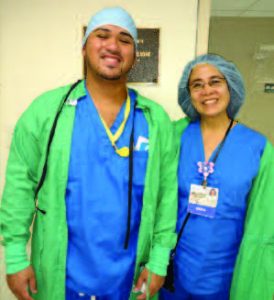 TRINITAS NURSING CAMP VETERAN RETURNS TO THE O.R.
TRINITAS NURSING CAMP VETERAN RETURNS TO THE O.R.
Hisham Santiago, RN, began his career at Trinitas as a volunteer. During the summer of 2008 he volunteered part-time and participated in a week of Nurse Camp at Trinitas. During Summer Nurse Camp, students partner with nurse mentors as they perform their daily tasks, tour the hospital, witness surgical procedures, attend medical lectures, and earn their CPR certification. “Nurse Camp at Trinitas exposed me to the clinical setting of what nursing is all about. It helped me to open my eyes,” says Hisham. From his Nurse Camp experience, Hisham decided he wanted to become a nurse—and so he did—and has returned to Trinitas as an OR nurse. Hisham’s mother Brighida Santiago, RNFA is an OR nurse at Trinitas as well!
 WOMAN OF THE YEAR
WOMAN OF THE YEAR
Heidi Reavis, an EDGE Magazine contributor, was honored by the Women’s City Club of New York with its 2016 Centennial Civic Spirit Award for her work in anti-discrimination, employment law, television and film. Heidi has also been recognized by the Women’s Sports Foundation for her successful work in Title IX desegregation in scholastic sports. Her most recent EDGE story— “How the Smartest Guy In the Room Can Be the Stupidest Guy on the Planet”—was co-authored with Neil Parent and looks at the five costliest legal mistakes people make. You can find it at edgemagonline.com/home26.htm.
 JOSEPHINE’S PLACE AND TRINITAS TEAM UP
JOSEPHINE’S PLACE AND TRINITAS TEAM UP
Josephine’s place has long been a staple in the Elizabeth commu-nity as a refuge for women who have come across hard times. The center has evolved to include workshops, events, and even a community garden. Trinitas has played a big role in the expansion of the center’s services and events, more particularly through CPR Training. Karen Lukenda, CPR Instructor at Trinitas, has held ongoing certification classes that provide attendees with up-to-date lifesaving tactics at no cost.
 STRENGTH IN NUMBERS
STRENGTH IN NUMBERS
Ashley Schultz, Robert Schultz and Lloyd Perkel welcome customers to the new Short Hills location of Schultz Furrier and M. Blaustein, at 516 Millburn Avenue. The two multi-generational businesses, renowned for service, style and selection—and respectful competitors for six decades—have merged to offer clients the complete luxury outerwear experience.
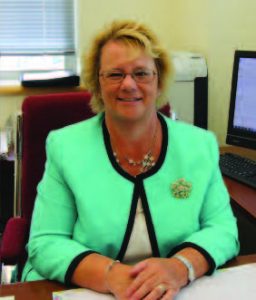 TRINITAS SCHOOL OF NURSING WELCOMES NEW DEAN
TRINITAS SCHOOL OF NURSING WELCOMES NEW DEAN
Trinitas welcomes Donna Penn, MSN, new Dean of the Trinitas School of Nursing. Donna comes from Mercer County Community College, where she served as the Director of Nursing Education and pro-vided leadership and oversight for all aspects of the Associate’s Degree program. Throughout her career she has developed partnerships to ensure seamless academic progression of graduates and their success.
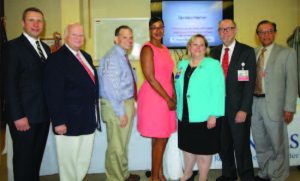 ZIKA VIRUS FORUM EASES CONCERNS
ZIKA VIRUS FORUM EASES CONCERNS
Trinitas Regional Medical Center collaborated with the City of Elizabeth to host a forum on the Zika virus on July 17th and informed the general public on not only the status of the virus, but preventative measures as well. Dr. William Farrer and Dr. Munir Nazar were able to elaborate on the origins and prenatal effects of the Zika virus.
We welcome the community to our programs that are designed to educate and inform. Programs are subject to change.
SEMINARS
All Seminars will be held at the
CORE Building, 1164 Elizabeth Ave., Elizabeth, NJ
(Enter parking lot from South Broad St., next to Fire House) Light dinner will be served. Call (908) 994-8939 to register.
WEDNESDAY, SEPTEMBER 21
5:30 pm
Vaccines: When and why do I need
vaccines? Pneumonia, Flu etc.
Speaker: Dr. Clark Sherer
Medical Staff President
WEDNESDAY, OCTOBER 19
5:30 pm
Veins: Getting a Leg up on Varicose
Veins
Learn about Varicose veins their causes and treatments Speaker: Dr. Timothy Wu
Vascular Specialist
WEDNESDAY, NOVEMBER 2
TBD
Diabetes: ABC’s of Diabetes
Learn to better manage, reduce risks and complications.
Speaker: Dr. Ari Ekmann, Chief of Endocrinology and Kathleen McCarthy, RN, CDE (Certified Diabetes Educator)
WEDNESDAY, NOVEMBER 16
TBD
Parkinson’s Disease: What is it and
coping with the diagnosis
Speaker: Dr. Vasyl Pidkaminetskiy
Primary Care Physician
COMMUNITY EVENTS
St. John’s Summit Concert Series
A variety of musical genres open to the community
Sunday, October 2, 2016 3:00 pm
The Zukerman Trio
Featuring the iconic Pinchas Zukerman
Tickets are $50 (Children 12 & under $30)
Saturday, November 5, 2016 7:00 pm
Wei Luo, the young multiple-award winning piano phenom Tickets are $30 (Children 12 & under $15)
St. John’s Lutheran Church, 587 Springfield Ave., Summit, NJ
For tickets or more information visit
www.stjohnssummit.org/concert-tickets
or call (908) 206-4250.
SPECIAL PROGRAMS
Health Services with Women In Mind
Trinitas helps provide women access to vital health services with a focus on preventive measures. These include educational programs and cancer screenings. Programs offered in English and Spanish.
To learn more about these services, contact Amparo Aguirre, (908) 994-8244 or at amaguirre@trinitas.org
Ask the Pharmacist:
Medication Management
Free of charge, by appointment only.
Monthly on the 4th Tuesday, 11:30 am – 1:00 pm
Call (908) 994-5237
TRINITAS HEALTH FOUNDATION EVENTS
THURSDAY, NOVEMBER 17
Jazz Celebration
featuring David Sanborn
New Jersey Performing Arts Center, Newark, NJ
For more information about the Foundation or to learn more about its fundraising events, (908) 994-8249 or nbrechner@trinitas.org.
Proceeds from these and other events benefit the patients of Trinitas Regional Medical Center. Making reservations for Foundation events is fast and easy on your American Express, MasterCard, Visa or Discover card!
TCCC SUPPORT GROUPS
Conference Room A or Conference Room B
Trinitas Comprehensive Cancer Center
225 Williamson Street, Elizabeth New Jersey 07207
All events take place from 1pm to 3pm.
Call (908) 994-8535 for 2016 schedule.
Living with Cancer
Viviendo con Cáncer, Grupo De Apoyo
Living with Breast Cancer
Viviendo con Cáncer de Mama
Caregiving Support Group
Viviendo con Cáncer, Grupo De Apoyo
Viviendo con Cáncer, Apoyo Familiar
For more information on any TCCC support programs and to RSVP, please contact Roxanne Ruiz-Adams, LSW, (908) 994-8535. Por favor llame al (908) 994-8535 para confirmar su asistencia.
MEDICAL AND BEHAVIORAL HEALTH SUPPORT GROUPS
Diabetes Management Support Group
Monthly, First Monday, 2:00 – 3:00 pm
Kathleen McCarthy, RN, CDE (Certified Diabetes Educator)
Open to both diabetics and non-diabetics who want to learn more about diabetes prevention.
65 Jefferson Street, 2nd Floor, Elizabeth, New Jersey Call (908) 994-5502 for further information or registration
Sleep Disorders
If you or someone you know experiences problems sleeping, consider contacting the Trinitas Comprehensive Sleep Disorders Center in Elizabeth. Another location can be found in Cranford at Homewood Suites by Hilton with easy access on and off the Garden State Parkway. Both centers are headed by a medical director who is board certified in sleep medicine, internal medicine, pulmonary medicine, and intensive care medicine, and is staffed by seven certified sleep technologists.
For further information, call (908) 994-8694 to learn more about the Trinitas Comprehensive Sleep Disorders Center or visit www.njsleepdisorderscenter.org
Narcotics Anonymous
Monday 7:00 – 8:30 pm
Sunday 12:00 noon – 2:00 pm; Sunday 5:00 – 6:30 pm
Jean Grady, Community Liaison, (908) 994-7438 Grassmann Hall, 655 East Jersey St., Elizabeth
Alcoholics Anonymous
Friday 7:30 pm – 8:45 pm
Jean Grady, Community Liaison, (908) 994-7438 Grassmann Hall, 655 East Jersey St., Elizabeth
HIV Education and Support Program
for HIV Positive Patients
Monthly. Call for scheduled dates/times.
Judy Lacinak, (908) 994-7605
Early Intervention Program Clinic, 655 Livingston St. Monastery Building, 2nd Floor, Elizabeth
Mental Illness Support Group (NAMI)
for Spanish Speaking Participants
4th Friday of each month except August, 6:30 pm – 8:30 pm Mike Guglielmino, (908) 994-7275
Martha Silva, NAMI 1-888-803-3413
6 South Conference Room, Williamson Street Campus 225 Williamson Street, Elizabeth
TRINITAS CHILDREN’S THERAPY SERVICES
899 Mountain Avenue, Suite 1A, Springfield, NJ • (973) 218-6394
“10 Tips…” Workshops
Come take part in the 7th year of our highly successful Ten Tips Workshop Series. The series is for parents, teachers, or other individuals who work with young children and focus on practical strategies that can be easily implemented into daily classroom and/or home routines. All of our workshops offer suggestions that are appropriate for all children with an emphasis placed on children with special needs and those who may be on the Autism Spectrum.
All workshops take place at the Trinitas Children’s Therapy Services Center, 899 Mountain Ave, Suite 1A, Springfield NJ. Workshops are $15 each.
September 20, 2016 6:00 pm – 7:30 pm
10 Tips for Talking to Parents about a Struggling Student
October 18, 2016 6:00 pm – 7:30 pm
10 Tips for Understanding Early Intervention and Special Education Services
November 15, 2016 6:00 pm – 7:30 pm
10 Tips for Building Gross Motor Skills During
Small Group Activities
January 17, 2017 6:00 pm – 7:30 pm
10 Tips for Building Sensory/Attention Skills During Small Group Time Activities
February 21, 2017 6:00 pm – 7:30 pm
10 Tips for Building Sensory/Tactile Processing
During Circle Time Activities
March 21, 2017 6:00 pm – 7:30 pm
10 Tips for Building Gross Motor Skills
During Circle Time Activities
April 18, 2017 6:00 pm – 7:30 pm
10 Tips for Building Fine Motor Skills
During Circle Time Activities
May 16, 2017 6:00 pm – 7:30 pm
10 Tips for Building Sensory/Tactile Processing
During Large Group Activities Time Activities
June 13, 2017 6:00 pm – 7:30 pm
10 Tips for Building Gross Motor Skills
into Large Group Activities
For more information or to register for this last workshops, please contact Christine German, OTD, OTR, at
(973) 218-6394, ext. 4012, or email CGerman@trinitas.org
Fall Programs: Oct . 10 – Jan . 20
All programs are offered once a week for 45 minutes at Trinitas Children’s Therapy Services, 899 Mountain Avenue, Suite 1A, Springfield, New Jersey 07081
These programs and/or group therapy sessions are a great alternative to individual therapy. They give children the opportunity to address key developmental areas in structured but busier environments that are more reflective of typical real-life home and school situations.
Scribbles to Script Handwriting Program
An opportunity for children from preschool (prewriting) through elementary (cursive) school to participate in multi-sensory fine motor, visual-motor, and visual-perceptual activities to learn prewriting skills , proper letter formation, and writing within the given lines using the Handwriting Without Tears program . Help to reinforce learning and make writing fun! Overseen by an OT.
Sports Readiness
An introduction for children into several fall/winter sports, including soccer, basketball, football, bowling, and kickball, in a non-competitive group setting. Overseen by a PT.
Social Butterflies
An opportunity for children to engage in activities to address turn-taking, topic maintenance, appropriate question asking, following non-verbal cues, and using manners. Overseen by a speech & language pathologist and/or an OT.
Typing Whizkids
An opportunity for children to learn efficient keyboarding/typing skills, including key location and finger placement, and speed and accuracy. Overseen by an OT.
My Trinitas Movement Groups
for 3 – 6 months, 6 months – 1y/o, 1 – 2 y/o, & 2 – 3 y/o
Children and parents/caregivers will participate in movement-based activities to address social interaction, turn-taking, following directions, motor planning, coordination, and motor skills. Sign up for 1 week or the whole 12 weeks.
Cook With US
An opportunity for children to learn the basics of daily nutrition and fitness in a practical and fun environment while engaging in simple meal and snack preparation. Overseen by a PT and personal trainer.
Parents Night Out
Drop your child(ren) off for a few hours of fun play time, a movie and a snack, while mom and dad enjoy a much needed night out. Takes place quarterly.
To register for any programs or for more information, please contact Kevin Nelson at knelson@trinitas.org,(973) 218-6394, ext. 13, or fax (973) 218-6351.
To learn more, visit www.childtherapynj.com
This page is sponsored by
Elizabethtown Healthcare Foundation
Inspired to Care, Inspired to Give
Cuba has been called a living time capsule… of old ways and new, of opulence and simplicity, of stunning cultural and natural diversity. Open again after more than a half-century to U.S. travelers, the country is undergoing an altogether new revolution. It may not be long before the scenery changes forever.
Photography by Avery Brighton



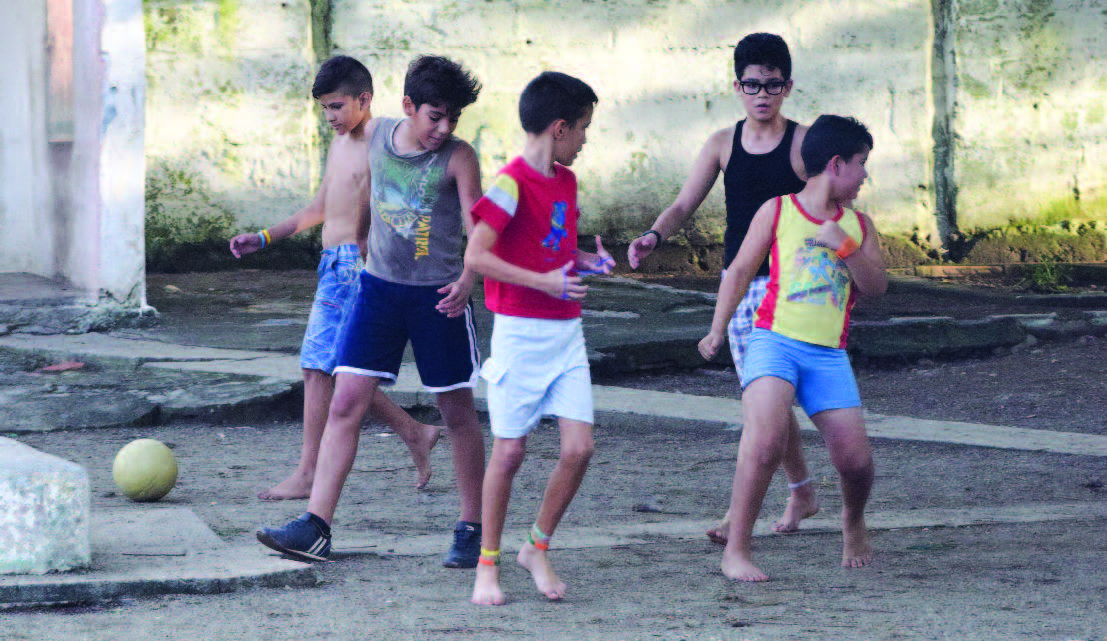
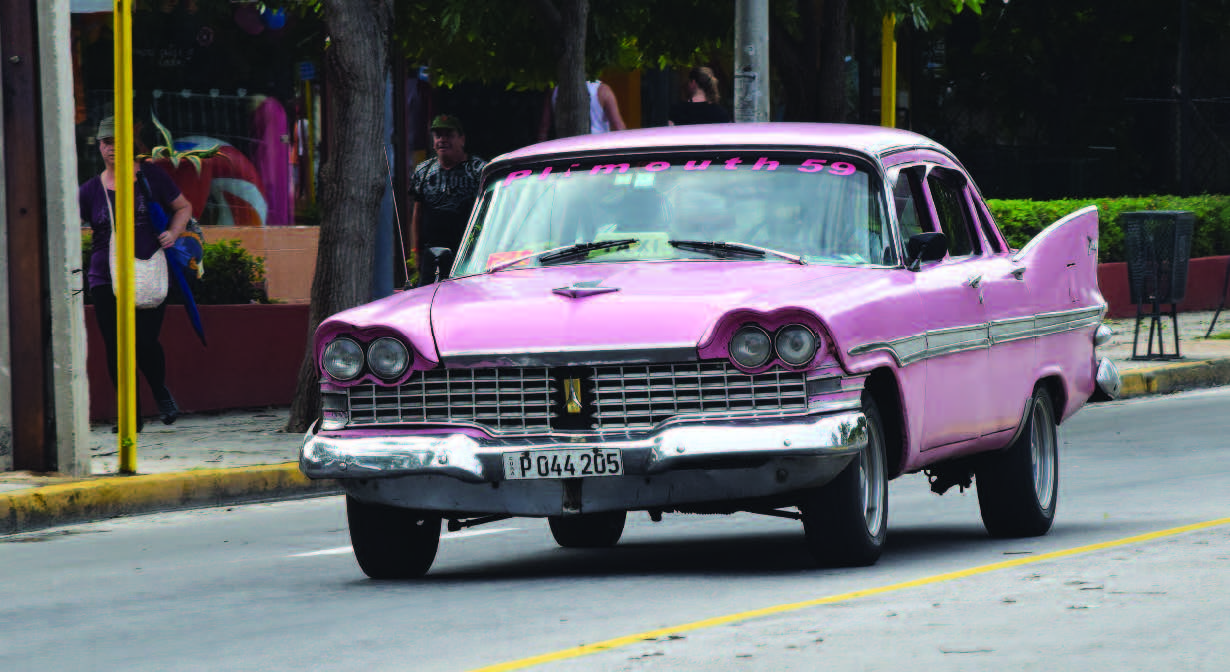







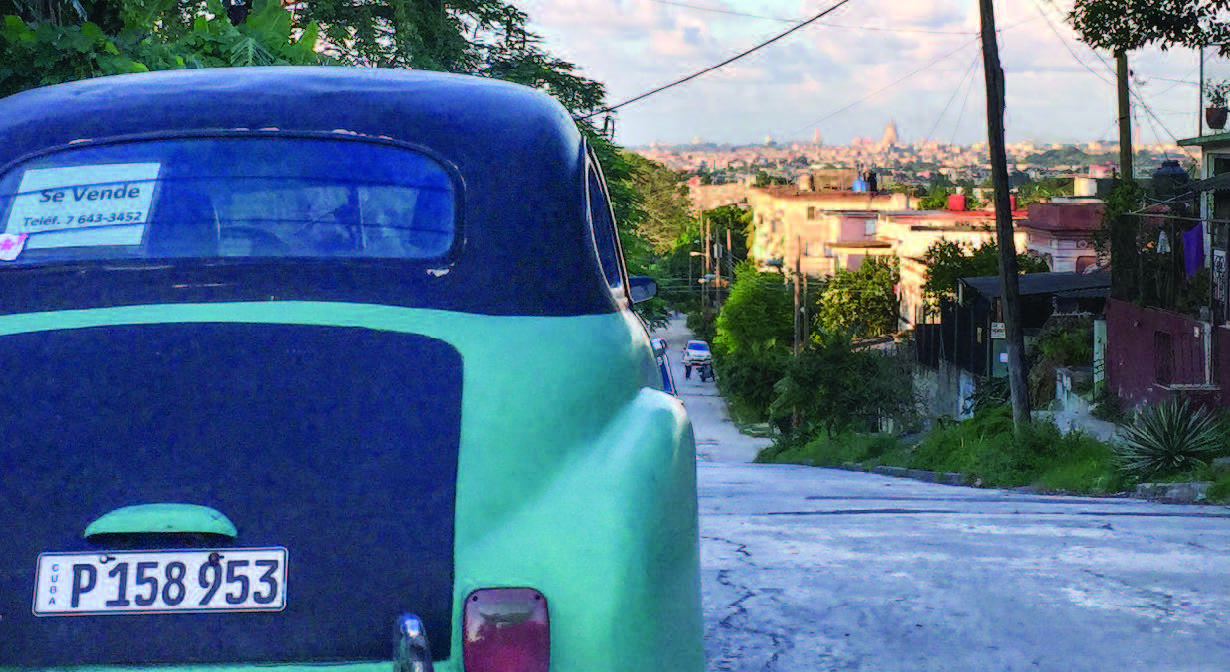
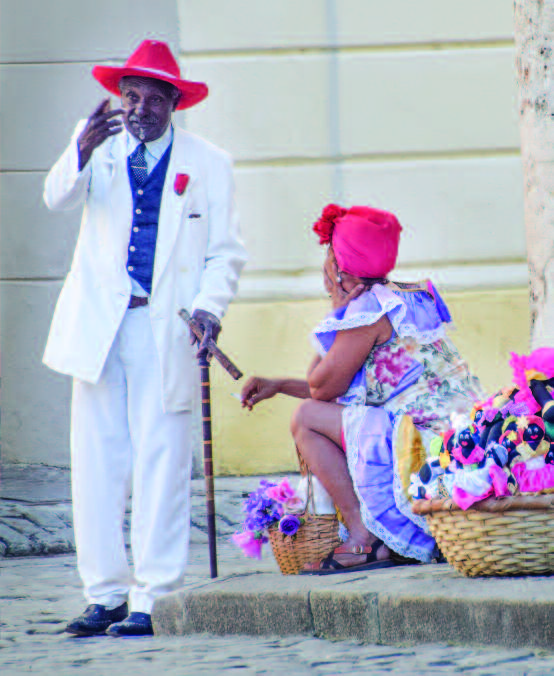

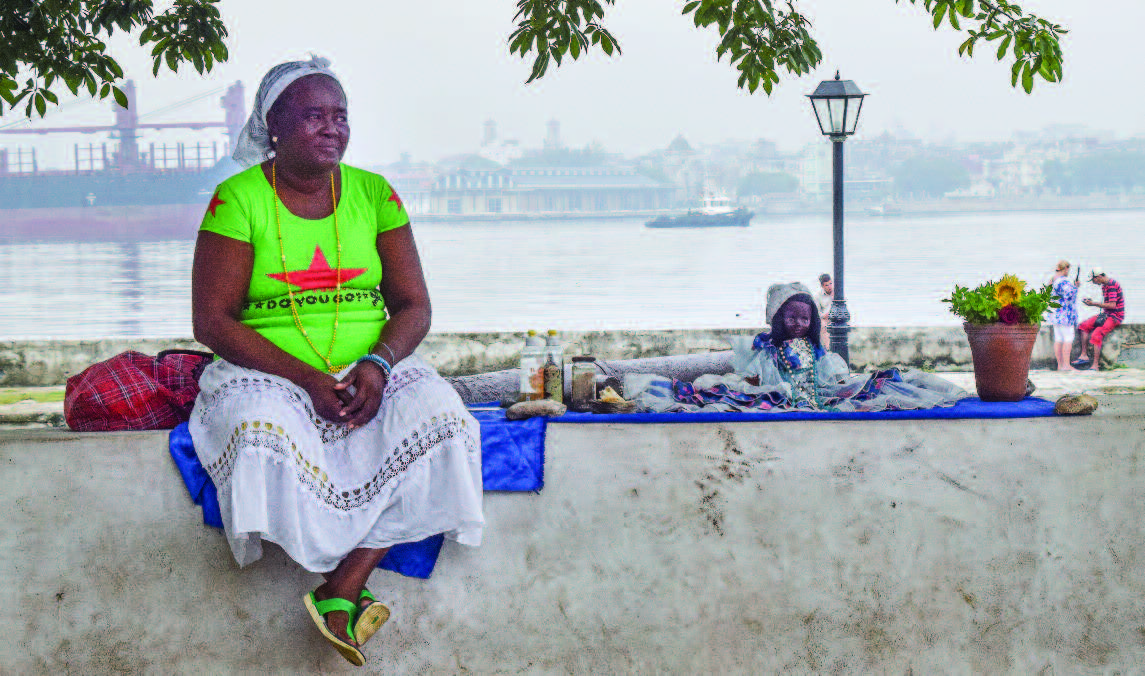
“There’s always an entrée that offers a combo of game meats. On this night, it’s kangaroo, antelope and quail.”
By Andy Clurfeld
Clydz
55 Paterson St., New Brunswick
Phone: (732) 846.6521
Reservations and major credit cards accepted. Lunch: Monday to Friday from 11:30 a.m. to 3 p.m. Dinner: Monday to Thursday from 5 to 10 p.m., Friday and Saturday from 5 to 11 p.m. The bar is open Monday to Friday from 11:30 a.m. to 2 a.m., Saturday from
4:30 p.m. to 2 a.m. and Sunday from 7 p.m. to 2 a.m. Prices: Starters: $9 to $20. Entrees: $22 to $39. Sides: $6 to $15. Cocktails generally range in price from $10 to $12.
The longer you work in New Jersey, the fewer degrees of separation exist between you and anyone else who lives in our storied state. I believe Clydz, a landmark restaurant in New Brunswick that opened nigh on 20 years ago, is one of the Garden State’s epicenters of connectivity. When it opened in 1997, the restaurant had two near-instantly famous specialties: the kind of cocktails that gave birth to the Mixologist Generation of a soon-to-be-new century and dishes that put game—from alligator to bison to rabbit—in the spotlight. In a college town, with folks fresh out of that college coming up with these concepts and putting them into play on a stage at once edgy-hip and comfy-friendly, Clydz spoke in a language that was spirited, refreshing and dicey.
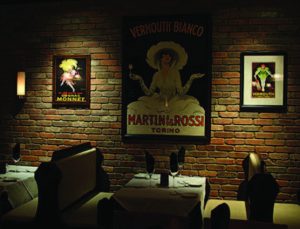 I recall reading Clydz’s press materials sent to me at The Asbury Park Press, where, at the time, I worked as the restaurant critic. What are these Clydz people thinking? I said to myself. They are not following the rules.
I recall reading Clydz’s press materials sent to me at The Asbury Park Press, where, at the time, I worked as the restaurant critic. What are these Clydz people thinking? I said to myself. They are not following the rules.
I admired them before I took a sip or a bite. Taking a chance, choosing not to play the same-old, same-old game, always appeals to me. My admiration for the courage it takes to test a conviction in public knows no bounds. I went, was somewhat impressed and extremely intrigued, and yet never wrote a review of the then-novel fledgling restaurant. Regrets? I’ve had only a few. This misstep of omission is No. 1.
It’s only just, then, that years and years later I meet and become friends with not one, but two members of the inaugural-era-of-Clydz staff. What are the odds? Well, in New Jersey, especially for someone who has been a reporter here for 40 years, pretty slam-dunk gonna-happen.
Game on, 2016; I go back to Clydz to see how the original vision of first owner Joe Clyde, who later was to bring his “game” game to the historic Sergeantsville Inn in the most bucolic part of Hunterdon County, has held up. Bottom line: Clydz may have shown best when the original crew of young’uns set new standards, but it’s still a place with a personality. And a vibe.

www.istockphoto.com
Yet…am I judging too harshly our lead server, who fails to offer us the names of the day’s various oysters? No, I’m not. She’s wrong when she replies to my query about the types of oysters offered that night with a curt, “Are you going to order them? You don’t need to know unless you are.”
“I won’t know that until I know what kinds of oysters you have tonight,” I respond. I think of my two ex-Clydz pals, both pros in other professions now. No way, no how would they have dissed a diner that way.
Our server doesn’t veer from curt when she provides a half-hearted recitation of the oyster lineup along with a sidebar of how important work on her master’s degree is to her.(Message received.) The oysters are carefully presented and tinglingly refreshing, particularly New Jersey’s own Cape May Salts. These Salts taste better and better every time I have them. On this night, they leave the Blue Points and Deep Bays in the also-ran category.
Meanwhile, we’re finishing a round of classic Clydz’s cocktails from a list that includes members of the first vintage of the mixed drinks that put this spot on the map. The size and scope of the drinks menu is comparable to the length and breadth of a classic Jersey diner’s bill of savory fare. The designated drinkers at my table are gleeful.(And ever more so as the night progresses: I’ve never before told a dine team, “OK, you can drink too much tonight.”)
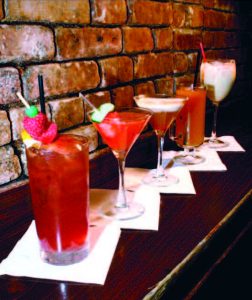 I’ll rattle off a few of the favorites: Corpse Survivor II (Death’s Door, Lillet, Cointreau, absinthe, lemon juice; can anybody fill us in on the composition of Corpse Survivor the First?); French 55 (Champagne, Zubrowka, St. Germain, pineapple juice, lemon); Holiday Inn (strawberry-infused vodka, St. Germain, cucumber, lime); Cyn City (Hayman’s Old Tom, Cynar, lemon, simple syrup, mint, ginger beer); Jersey Sazerac (Laird’s Applejack, Pernod, maple bitters, simple syrup)…you get the idea. These Clydzians are into complicated.
I’ll rattle off a few of the favorites: Corpse Survivor II (Death’s Door, Lillet, Cointreau, absinthe, lemon juice; can anybody fill us in on the composition of Corpse Survivor the First?); French 55 (Champagne, Zubrowka, St. Germain, pineapple juice, lemon); Holiday Inn (strawberry-infused vodka, St. Germain, cucumber, lime); Cyn City (Hayman’s Old Tom, Cynar, lemon, simple syrup, mint, ginger beer); Jersey Sazerac (Laird’s Applejack, Pernod, maple bitters, simple syrup)…you get the idea. These Clydzians are into complicated.
 Anyway, speaking of rattling: The braised python ravioli starter cossets a fine-chop of the fillet speckled with arugula, all of which is ladled with a wild mushroom-infused cream sauce. Meatballs made with various ground game meats (boar, we’re told, dominates the day’s mix) are given a spray of a roasted tomato demi-glace that’s mild and relatively unseasoned. As I eat both the python ravioli and the meatballs, I’m thinking it’s pleasant. But I’m looking for the kind of thrill that comes from accents that understand the protein they’re meant to enhance. Not there. The roasted bone marrow, plated with shreds of pulled short rib, a dab of tomato jam and toasts rubbed with black garlic, is more properly mild. I yearn for a few spoonfuls of rich jus.
Anyway, speaking of rattling: The braised python ravioli starter cossets a fine-chop of the fillet speckled with arugula, all of which is ladled with a wild mushroom-infused cream sauce. Meatballs made with various ground game meats (boar, we’re told, dominates the day’s mix) are given a spray of a roasted tomato demi-glace that’s mild and relatively unseasoned. As I eat both the python ravioli and the meatballs, I’m thinking it’s pleasant. But I’m looking for the kind of thrill that comes from accents that understand the protein they’re meant to enhance. Not there. The roasted bone marrow, plated with shreds of pulled short rib, a dab of tomato jam and toasts rubbed with black garlic, is more properly mild. I yearn for a few spoonfuls of rich jus.
The cold appetizers have more character, even though the kitchen’s technical skills sometimes can falter. The charred octopus comes with cantaloupe that’s been grilled and then wrapped with bresaola. Some pieces of octopus are tender and lovely, while others tough; when it works, it’s terrific with onions that are pickled, tomatoes that are roasted till sweet and figs coaxed into a concentrated state. Duck confit deviled eggs sound like an ingredients’ dream come true but the eggs are rubbery and—even with the accompanying chipotle-licked aioli—the starter comes off as shy. Smoked salmon tostones have a flash of red chili-powered oil and plate partners that include mango relish and a pockmark of caviar. They’re in league with the other apps: in need of a flavor that leads, that guides.
 There’s always an entrée that offers a combo of game meats. On this night, it’s kangaroo, antelope and quail. Hesitant to try an exotic meat? Don’t be. The kangaroo and antelope were chicken-breast mild, with the quail notching the highest intensity of flavor on that plate. Probably the most “gamey” entrée of the night was the rosy loin of rabbit, plied as it was with a pert sun-dried tomato pesto that weighed in as refreshingly tart and plated with nutty quinoa, favas, carrots and sweet corn. Grilled bison hangar steak was served well by a red wine reduction and a spray of onions electrocuted into frizziness. The kitchen tosses a quail egg onto the plate as a game give-away. Seafood, anyone? Try the rice bowl, with trout and shrimp in the lead and a supporting cast of squiggles of egg, baby bok choy and dashi broth. Mild, once again, ruled. But it’s a comforting dish.
There’s always an entrée that offers a combo of game meats. On this night, it’s kangaroo, antelope and quail. Hesitant to try an exotic meat? Don’t be. The kangaroo and antelope were chicken-breast mild, with the quail notching the highest intensity of flavor on that plate. Probably the most “gamey” entrée of the night was the rosy loin of rabbit, plied as it was with a pert sun-dried tomato pesto that weighed in as refreshingly tart and plated with nutty quinoa, favas, carrots and sweet corn. Grilled bison hangar steak was served well by a red wine reduction and a spray of onions electrocuted into frizziness. The kitchen tosses a quail egg onto the plate as a game give-away. Seafood, anyone? Try the rice bowl, with trout and shrimp in the lead and a supporting cast of squiggles of egg, baby bok choy and dashi broth. Mild, once again, ruled. But it’s a comforting dish.
I suspect regulars order another cocktail for dessert; indeed, while the dining spaces were less than half-full on this weekend evening, Clydz’s bar was, constantly, three or four deep. Maybe more. These are the folks, I suspect, who know to avoid the apple pie spring rolls with a “crust” that tastes like Play-doh. Better was the light-batter, not-too-sweet crepes plied with blackberries, raspberries and blueberries.
By now late-late, Clydz is rocking. As I eye the undulating crowd for the drinks of choice, I find myself stumped. I ask a server what the most popular cocktails are and he shrugs. “Everything is popular,” he says. There are maybe 100 cocktails on the list. That’s a lot of popular. Are the game dishes as popular as the drinks? I ask, hoping for a more specific answer.
Which I get. “The Tater Tots (with parmesan and truffle oil) and the Onion Rings (with cheese curds) are good.”
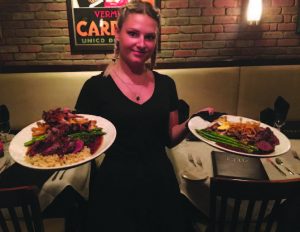 Game off, I guess. Those first years of Clydz, back in a previous century, set standards for fun and game—quite literally. The people who came together here may well have shared a spirit of adventure that wasn’t offered by other establishments in New Jersey. Frankly, I wish Clydz would reconnect with its roots and the soul of its menu. Game is on the menu; it needs to be in the concepts and the cooking, too.
Game off, I guess. Those first years of Clydz, back in a previous century, set standards for fun and game—quite literally. The people who came together here may well have shared a spirit of adventure that wasn’t offered by other establishments in New Jersey. Frankly, I wish Clydz would reconnect with its roots and the soul of its menu. Game is on the menu; it needs to be in the concepts and the cooking, too.

Photo by Gage Skidmore
What a character! When an actress hears those words, they usually refer to the person she’s playing…or the actress herself. For Ming-Na Wen, one needs to be a bit more specific. She slips in and out of her roles with the ease one would expect from a veteran stage and screen performer. Yet, as EDGE writer Gerry Strauss discovered, the perspective, humor and irony she brings to those parts comes from her very core. From her breakthrough performance in The Joy Luck Club to her starring role on ER to breathing life into the voice of Mulan, Ming-Na has consistently surprised audiences with the depth and subtlety of her work. On the hit ABC series Agents of S.H.I.E.L.D., she has won over fans of the Marvel universe by playing Agent Melinda May brooding, stoic and scary. In other words, totally against character.
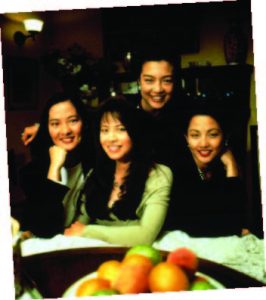
Buena Vista Pictures
EDGE: What qualities did you try to bring to your breakthrough role in The Joy Luck Club?
MNW: I brought my whole Asian-American experience to the role of June Woo. One of the reasons why I think I was cast for that part was because there’s something inherently difficult about being Asian in America. You tend to feel like people treat you sort of as a foreigner even though you’re American. For me, I had that kind of mixture—having come from China, from Hong Kong, and having had to learn English in America and assimilate—but then, at the same time, having these immigrant parents who really didn’t assimilate as much and sort of staying in their own culture. So that was all about June, feeling like she didn’t quite fit in and having a cultural gap, as well as the age gap with her parents, and feeling inadequate in certain ways. She dealt with it in a more shy way and in a more enclosed way. I, of course, became an actor. That’s the only difference between me and June.

Warner Bros. Television
EDGE: How about your work on ER?
MNW: Oh, yeah. Well, I brought my “vast” knowledge of medical experience [laughs]. As an Asian, we had to be doctors or lawyers, so I’d already “been” to Harvard, Yale, John Hopkins….in fact, that’s one of the jokes that I would say to my parents: “Hey. You wanted me to be a doctor, so I was a doctor for five years!” [laughs] I think the thing that I brought to Dr. Chen was the fact that she gets a little snarky. She always wanted to prove that she was the best at her job. She was very different from who I was. I’m not snarky, but I’m definitely sarcastic, as you can probably tell.
EDGE: And funny.
MNW: Okay! [laughs]. But for me, her character was definitely someone that I had to create more based on who I thought she was. It came from observations of some of the people that I grew up with, who just feel like they are always having to compete and always having to prove themselves. The really interesting thing about her character, who became pregnant on the show, was that I did become pregnant for real. I guess that’s really kind of a strong connection. The writers and the producers were like, “Oh. I think you just slept your way into a really good storyline.”
It was really funny because they wanted her screaming and doing all this stuff and I was, like, into holistic birthing and all-natural kind of stuff. So, we shot the scene before I actually gave birth and I thought it was way too overdramatic. After I actually did have my kid—and realized how painful of an experience it really was—I called my director back and I said, “We need to re-shoot all of those scenes. I wasn’t dramatic enough.” That holistic stuff didn’t really work for me.
EDGE: Your first TV series actually was The Single Guy in the late 90s, a sitcom. What was special about playing Trudy in that series for you?

ABC/Kurt Iswarienkio
MNW: Getting that pilot—and the mere fact that I was working with a legend like Ernest Borgnine—that blew me away. It was so fortuitous because I came from theater and, with sitcom, it is theater. It was like putting on a show, a play, every week, which we did in front of a live audience. Trudy was just this great character who was not shy about her opinion and had a lot of attitude—but also a lot of love for her friends and for her husband. So, yeah, she was really fun to play. It was just my cup of tea. I hope to retire with a sitcom.
EDGE: You’ve been a part of so many strong ensemble casts. Is that the environment that you enjoy the most, being a member of a group of talented people who are on equal footing?
MNW: I thrive in that environment. I think any show requires that, unless you’re doing a one-woman show. It appeals to me because of my theater background. The whole idea of being with a group and sharing an experience together in creating something, it’s just so satisfying and so much fun. I guess my karmic energy, or whatever it is, it keeps leading me to that…and I certainly have no desire to do a one-woman show.
EDGE: Let’s talk about Mulan. In hindsight, that iconic role broke a lot of barriers and inspired and empowered girls. Was that a focus for you in providing the voice for that character?
MNW: I knew about the story because she’s a legendary character in China and for me it was about bringing her heart and soul. Mulan came early in my career and I was just so enamored with Disney and the writers and the producers, who put so much research and time in creating her. My stepfather was twenty years older than my mother at the time, so his health was not at its best. All of the stuff that Mulan did for her father and for her family—it just was so true to what I was going through. So for me, I was focused on bringing her heart and her desire to kind of figure out her self-worth.
EDGE: Making sure that it wasn’t just a cartoon character.
MNW: Right. She was a real young woman trying to figure things out, even though she was rebellious and she was reprimanded for it all the time. Something about her is very, very different than all the other princess stories because she really wasn’t a princess. She kind of became, like, an honorary princess. The emperor kind of endowed her with his blessing. Ultimately, she was just a regular girl trying to live in a society that either accepted her or didn’t accept her, believed in her or didn’t believe in her, and she had to figure it all out. I think that’s why it resonates with so many people. Ultimately, Mulan just followed her heart, which is the beam of the movie. And everything turned out right in the end. That’s kind of my philosophy in life. I’ve always wanted to be an actress. My mother certainly did everything in her power to dissuade me from doing it, but ultimately, I just followed my heart and followed who I was and that’s a great, great inspiring motto for any little boy or girl.
EDGE: Your family owned a restaurant in Pittsburgh. Were you involved from a young age?
MNW: Yeah, very involved. It’s always interesting when you grow up in an environment where you’re basically immersed in your parents’ work. That’s what I did. I would do my homework. I would socialize with the waiters and the cooks and then, as I had free time, my mother taught me about how to be at the cash register, doing take-outs and, then when I was strong enough, how to do waitressing. I did it all. It taught me a lot about business and it taught me a lot about communicating with people—and taking their money.[laughs] No, I’m just kidding.
EDGE: Interacting with such a variety of people every day must have provided you with a lot of character studies for later in life.
MNW: Absolutely. That’s a very good question because on any given day we would have our regular customers come through, as well as some colorful characters. Every day I was bombarded with people! Our cooks, as well as our waiters, all had very distinct, wonderful personalities and I was definitely immersed in an environment where I wasn’t just isolated in a house. Yeah, I definitely think that helped me to always be observing and watching people. And I still love doing that to this day. Living in New York, sometimes I would just grab a cup of coffee and a doughnut—when I used to eat doughnuts—and I would just sit down and watch people walking. You would be amazed at the variety of walks that people have. It was always fun.
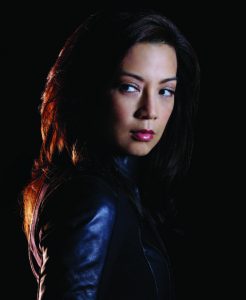
ABC/Florian Schneider
EDGE: What do you like about playing Agent May, your character on Marvel’s Agents of S.H.I.E.L.D?
MNW: Whatever transpires, Agent May is very buttoned-down and maintains this incredible wall, hiding behind her mask, so to speak. She’s one of those interesting characters who, with every moment that she’s had, kind of goes back to square one in some way, where she just feels safest by not dealing with emotions. She is able to function in life by just compartmentalizing.
EDGE: What happens when she tries to open up?
MNW: It never works out. It makes me laugh because the writers know how much I want her to emote more. That’s just the actor in me, how much I want her to be able to share and open up. And they’re just, “Nope. Nope. Less Ming. More May. That’s how we like her.” I think Agent May will still stay very much the “bad-ass” that she is and I think the audience really loves that in her. [laughs] Which is so masochistic. Our fans know it’s all in there, because I do. I feel it all…but then I have to flatten it all up. She is absolutely, out of all the characters I’ve ever done in my life, the absolute opposite of who I am. Completely. You would never see Agent May laughing at a potty joke, for sure.
EDGE: Agent May is a character in the Lego Marvel Super Heroes video game that was released earlier this year. You’ve actually lent your voice to a number of video games. How does that process differ from acting onscreen, or voicing an animated character like Mulan?
MNW: It is the most bizarre session you can ever imagine. I really wish I had video tapes of those sessions, working voices in games. Basically, you don’t know which version they are going to pick. It depends on how the player is playing the game. You basically say “Hi” five different or ten different ways and I’m like, “Hi! Hello. Hey. What’s up?” Also, a lot of it is very, very dramatic. You do weird noises like, “Oh! You’re falling down a cliff!” It’s ultimately very, very bizarre. You do this stuff and after three hours, four hours of it, it’s exhausting and feels silly.You’re feeling kind of stupid about it, but then when you see the game and how it’s put together, you realize that all that variety does help in different situations.
MNW: I grew up going to the arcade every day after school with my boyfriend and spent a lot of quarters so I just think it’s the coolest thing that I’m in games. It’s so crazy. You’re this little Lego character. It’s amazing. For a geek girl like me, it doesn’t get any better.

